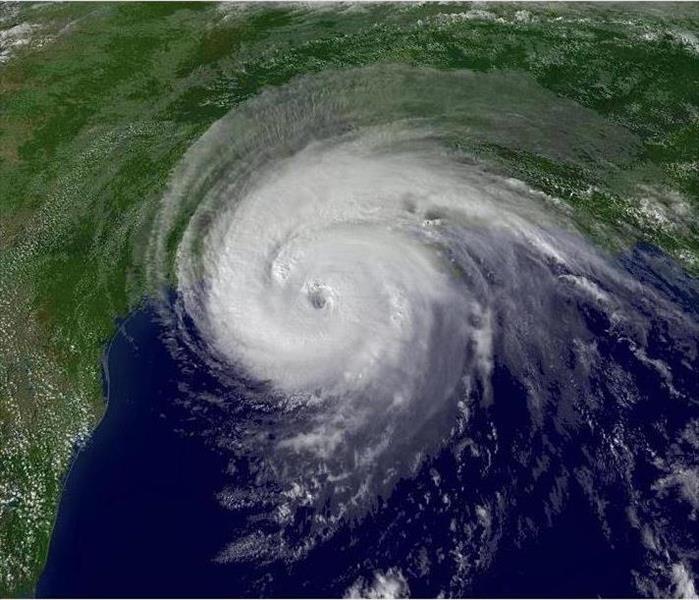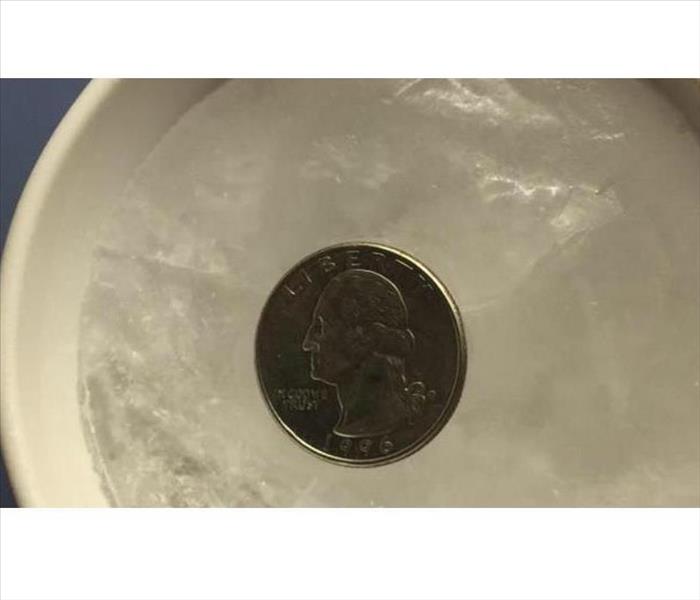Archived Storm Damage Blog Posts
Tips for Saving Food after a Storm
12/6/2022 (Permalink)
Few things are as scary and unpredictable as natural disasters. While all emergencies are terrifying, there's something about the uncontrollable nature of these disasters that make them especially frightening.
While it's impossible to know what exactly will result after one of these disasters, it always pays off to have some practical knowledge on hand, from the biggest issues to the smallest inconveniences.
When it comes to said inconveniences, nothing is as annoying as trying to guess whether your food has gone bad or not. Often during a huge storm, electricity tends to get blown out, which means that your refrigerator has probably died and left your food to spoil. One of two things will happen: the food will defrost, go bad, then maybe refreeze OR it will stay frozen or refreeze in time to keep the food edible.
We can feel a little safer with this practical, simple tip:
DIRECTONS
Place a cup of water in your freezer.
Freeze the water until it is solid, and then put a quarter on top of the frozen water and return it to your freezer.
Leave it in your freezer.
You're probably asking yourself, what does this tip accomplish?
It helps you determine whether or not your food has gone bad , or whether it refroze or stayed frozen while you were away.
For instance, if you return after you have been evacuated and find the frozen water has melted and the quarter has fallen to the bottom of the cup, you know that all the food has defrosted and it should be thrown out.
However, if the quarter is either on the top of the frozen cup or in the middle of the cup, then your food may still be okay to eat. The top tells you that the freezer was still in tact the whole time - the middle tells you that your food might have defrosted, but later re-frosted when electricity returned.
Most importantly, as a general rule, if you feel your food is no longer safe, simply throw it out. Safety is the utmost priority and eating food that may have spoiled can have numerous negative health consequences.
My Property Sustained Damage after a Storm- What Should I Do Next?
11/7/2022 (Permalink)
Call SERVPRO Technicians in Little Falls to Handle the Storm Flood Damage in Your Residence.
As a homeowner, you need to know what to do after a storm causes flooding in your residence. An experienced flood damage mitigation company such as SERVPRO can help you to restore your Little Falls home to its pre-incident state.
What can happen in my house after it floods?
Floodwater can weaken or completely ruin flooring, walls, and ceilings, among other structures. Do not hesitate to contact restorers to mitigate the storm flood damage in your Little Falls home. If you wait long before hiring a restoration firm, there is a chance for mold and other secondary damage occurring.
What can I expect from your flood remediation services?
When you contact SERVPRO technicians to perform flood damage cleanup and remediation, our team can come to your residence ready to start working right away. We usually begin the flood remediation process with a damage assessment to determine the extent of the destruction.
When inspecting a home, we consider how many materials are contaminated, if the materials are non-porous or porous and if it is possible to ventilate the area. Our technicians also consider if it is necessary to perform containment and if we can decontaminate and restore the affected materials. It may be impossible to restore some materials like carpets. In that case, we can remove and replace them. We offer an estimate that outlines the cost of our repair and restoration services.
What does flood restoration involve?
Flood remediation and restoration services depend on the severity of the damage. Generally, they involve the following:
Debris removal
Water removal
Water damage repair
Disinfection
Deodorization
We have trained our technicians to clean up and repair flood-damaged properties to their preloss condition. We can mitigate the damage and rebuild the affected areas, enabling you to save time and money. We are fully equipped with industrial-strength water removal and drying equipment such as:
Self-priming trash pumps
Centrifugal air movers
Refrigerant dehumidifiers
Should I turn off the equipment?
The restoration equipment we use can run for days without being turned off. It does not overheat. Unless our technicians advise you otherwise, you should let it remain running until we complete the restoration process. Our technicians monitor the equipment and job progress daily, adjusting, and moving the equipment as necessary.
Flooding can lead to extensive secondary damage if you delay the restoration process. Call SERVPRO of Clifton at (973) 928-3705 for efficient flood restoration services. We’re Faster To Any Size Disaster.
Find more information about Little Falls.
Emergency Prep Kit
8/23/2022 (Permalink)
Have you ever wondered about emergencies? Some people don't care to prepare a kit until after the disaster has happened, also known as too little too late. With this sample checklist you can quickly create your own emergency disaster kit that could keep you alive and comfortable for 3 days.
- Container for the kit, such as a plastic tote or a wearable duffle bag
- 1 gallon of water per person/day
- 2,000 calories of healthy food per person/day (nuts, grains, food bars, canned food etc.)
- Compact sleeping bag and bedroll
- Hygiene Products
- Toothbrush and toothpaste
- First aid kit
- Petroleum jelly or other lubricant/moisturizer
- Tools
- Self powered flashlight
- List of doctors and family contacts
Give us a call to learn more. SERVPRO of Clifton 973-928-3705
Prevent Mold after Water Damage
12/16/2021 (Permalink)
Water in unwanted areas can cause considerable damage to your possessions and home. When water damage occurs either due to a leak or natural disaster, mold can develop quite fast. Preventing mold development is vital to maintaining clean and healthy air in your home. It's essential to begin the drying process started as soon as possible. After a water intrusion occurs, there is a 72 hour window to prevent the potential of mold growth.
Proper drying is important. Many times a person will think that moisture was removed when in fact enough moisture was left behind to allow mold to start growing. If a minor amount of moisture is lingering inside the wall cavities, behind the baseboards, in the carpet, or under the carpet padding it will likely be weeks before it all dries up, by that time the mold starts forming as visible spores on your walls. Many mold remediator's and carpet cleaning companies will focus efforts on drying the room that flooded and neglect nearby rooms where water flowed hidden inside wall cavities and under carpet or even tile. SERVPRO of Clifton's certified and trained production staff will ensure all effected areas are fried properly.
After you call your insurance agent to report the initial water damage, call SERVPRO of Clifton we'll quickly begin the water damage cleanup to prevent mold from developing in your home.
SERVPRO of Clifton 973-928-3705
"Like it never even happened."
Prepare for a Winter Storm
12/15/2021 (Permalink)
Winter is on us and winter storms are expected in the Clifton NJ areas.
The best way to keep your family and yourself safe is to plan and prepare before the storm hits.
Listed below are tips and suggestions for preparing your family for upcoming winter storms.
Communication: If a power outage should occur, make sure to have the following:
- Cell phone, portable charger, extra batteries
- Battery powered radio with extra batteries, for listening to local emergency instructions
- Find out how your community warms you about severe weather (siren, radio, television, websites)elderly neighbors and family members
Heating: Turning on the stove for heat is not safe
- Have at least one of the following heat sources available in case the power goes out:
- Extra blankets, sleeping bags, winter coats
- fireplace up to code and extra dry firewood
- portable space heater or kerosene heaters
- Have the following safety equipment:
- Chemical fire extinguisher
- Smoke alarms in working order
- Carbon monoxide detector in working order
- Generators should be located at least 20 feet from any window, door or vent and in a space where it will not get wet from rain or snow (Never use generators indoors or inside garages or near any intake to the home.)
- Do not store gasoline indoors
Food & Safety: Have a weeks worth of food, water and supplies
- Drinking water
- Canned/ no-cook food
- manual can opener
- baby food / formula (if baby in house)
- first aid kit
- ice melt for sidewalks or walkways
- Flashlight and extra batteries
- battery powered lamps. Avoid using candles if possible
Household Water Supply:
- Leave water taps opens slightly so there is a continuous drip
- Keep indoor temps warm
- Open cabinet door under sink to allow warm airflow
Should your pipe freeze and burst during a storm, call the service professionals at SERVPRO of Clifton to clean and dry your structure to prevent further damage,
SERVPRO of Clifton
973-928-3705
How to Heat Your Home Safely in the Winter
12/15/2021 (Permalink)
Heat Your Home Safely
If you plan to use a wood stove, fireplace, or space heater, be extremely careful. Follow the manufacturer's instructions and remember these safety tips:
- Use fireplaces, wood stoves, or other combustion heaters only if they are properly vented to the outside and do not leak flue gas into the indoor air space.
- Have your heating system serviced by a qualified technician every year.
- Do not burn paper in a fireplace.
- Ensure adequate ventilation if you must use a kerosene heater.
- Use only the type of fuel your heater is designed to use-don't substitute.
- Do not place a space heater within 3 feet of anything that may catch on fire, such as drapes, furniture, or bedding. Never cover your space heater.
- Never place a space heater on top of furniture or near water.
- Never leave children unattended near a space heater.
- Make sure that the cord of an electric space heater is not a tripping hazard but do not run the cord under carpets or rugs.
- Avoid using extension cords to plug in your space heater.
- If your space heater has a damaged electrical cord or produces sparks, do not use it.
- Store a multipurpose, dry-chemical fire extinguisher near the area to be heated.
- Protect yourself from carbon monoxide (CO) poisoning by installing a battery-operated CO detector and never using generators, grills, camp stoves, or similar devices inside the house, in basements, in garages, or near windows.
Light Your Home Safely
If there is a power failure:
- Use battery-powered flashlights or lanterns rather than candles, if possible.
- Never leave lit candles unattended.
Use Generators Safely
Generators should be located at least 20 feet from any window, door or vent -- preferably in a space where rain and snow does not reach them.
- Never use an electric generator indoors, in the basement, inside the garage, or near open windows or the air intake of your house because of the risk of carbon monoxide poisoning.
- Plug in appliances to the generator using individual heavy-duty, outdoor-rated cords.
- Do not use the generator or appliances if they are wet because of the risk of electrocution.
- Do not store gasoline indoors where the fumes could ignite.
Cook Safely
- Never use a charcoal or gas grill indoors. The fumes are deadly.
Conserve Heat
Some gas-fueled heaters, such as vent-less gas fireplaces, require some ventilation. Otherwise, if you don't need extra ventilation, keep as much heat as possible inside your home.
- Avoid unnecessarily opening doors or windows.
- Close off unneeded rooms.
- Stuff towels or rags in cracks under doors.
- Close draperies or cover windows with blankets at night.
Monitor Body Temperature
Infants
Infants less than one year old should never sleep in a cold room because they lose body heat more easily than adults. Follow these tips to keep your baby safe and warm during the extreme cold:
- Remove any pillows or other soft bedding. These can present a risk of smothering and Sudden Infant Death Syndrome (SIDS).
- Dress infants in warmer clothing such as footed pajamas, one-piece wearable blankets, or sleep sacks.
- Try to maintain a warm indoor temperature. If not, make temporary arrangements to stay elsewhere.
- In an emergency, you can keep an infant warm using your own body heat. If you must sleep, take precautions to prevent rolling on the baby.
Older Adults
Older adults often make less body heat because of a slower metabolism and less physical activity. If you are over 65 years of age:
- Check the temperature in your home often during extremely cold weather.
- Check on elderly friends and neighbors frequently to ensure their homes are adequately heated.
Keep a Water Supply
Extreme cold can cause water pipes in your home to freeze and sometimes rupture. When very cold freezing temperatures are expected:
- Leave all water taps slightly open so they drip continuously.
- Keep the indoor temperature warm.
- Improve the circulation of heated air near pipes. For example, open kitchen cabinet doors beneath the kitchen sink.
If your pipes do freeze, do not thaw them with a torch. Instead, thaw them slowly by directing the warm air from an electric hair dryer onto the pipes.
If you cannot thaw your pipes, or the pipes are ruptured, use bottled water or get water from a neighbor's home. As an emergency measure, if no other water is available, snow can be melted for water. Bringing water to a rolling boil for one minute will kill most microorganisms or parasites that may be present but won't remove chemical pollutants sometimes found in snow.
Eat and Drink Wisely
Eating well-balanced meals will help you stay warmer. Do not drink alcoholic or caffeinated beverages because they cause your body to lose heat more rapidly. Instead, drink warm, sweet beverages or broth to help maintain your body temperature. If you have any dietary restrictions, ask your doctor.
Is Water Getting in Your Attic?
12/3/2021 (Permalink)
Restoring and Repairing Flood Damage in Your Clifton Attic
Severe weather systems that can sometimes affect the Clifton area of New Jersey offer strong winds capable of hurdling debris and tearing off roofing materials. Once vulnerabilities exist in the exterior defense of your house, it is a direct path for water and elemental exposures to occur that can allow situations like flooding. For the attic of your home, this water damage can spread quickly to the point of getting out of control, and this problem can continue to worsen without the appropriate intervention.
Among the first steps that must get taken when flood damage is occurring in your Clifton attic from a compromised roof is to get competent and qualified contractors on the scene quickly for temporary solutions. Our SERVPRO rapid response team features licensed contractors that can offer emergency board up and tarping services to correct vulnerabilities in your home’s construction to allow mitigation work to get started.
Once our professionals have arrived at your home, we must get to work quickly on extracting water from the attic space, unless this damage has already spread to the floor beneath this area of the property. The SERVPRO team can utilize moisture detection equipment and thermal imagery to locate moisture between floors of your home and into spaces of the attic that are challenging to access.
Because mitigation work needs to wrap up as quickly as possible, our team works to ensure that we arrive within hours of a call to get this critical extraction and drying efforts started. Once we have managed these effects inside of the house, our licensed contractors on the team can begin their efforts of rebuilding and restoring the damaged roof that allowed the flooding.
We offer every customer a comprehensive approach to recovery when flooding has occurred, and our qualified and experienced SERVPRO of Clifton team is available 24/7 to help. Give us a call anytime you need us at (973) 928-3705.
Flood Removal Inspection Equipment Can Speed Up Recovery of your Clifton Home
11/12/2021 (Permalink)
Floodwater can cause significant damage to a home environment. These situations can be even more stressful when restorers need to remove further components to repair what is damaged. Interference with structure and contents can increase the amount of time it takes for the home to make a full recovery. Demolishing sections of drywall, for example, creates further damage and lengthens the procedure because restorers must then cut and replace the area.
At our company, we seek to use non-invasive measures in your home as far as possible during flood removal recovery in Clifton. This approach leads us to use advanced analytic equipment during the inspection phase. When your home is overcome by floodwater, there are visible elements you may notice like standing water levels or staining. However, there are also invisible elements like water migration, cavity saturation, and rising moisture content of materials that you may not notice.
Here at SERVPRO of Clifton, we will assess the invisible elements using inspection equipment. Thermal imaging cameras use infrared light frequency bands to measure temperatures of a surface. While these do not detect moisture, they can detect the after-effects of moisture on a surface, which is useful in assessing whether rising moisture content or migration is occurring. If water is residing in wall cavities, for example, it is likely that the surface temperature drops, which can then be picked up on by a thermal imaging camera.
As far as non-invasive methods are useful, SERVPRO of Clifton seeks to use them. Unnecessary removal of structural components during inspection can increase the turnaround of a restoration significantly. While it is often necessary to remove the structure to thoroughly dry property and reduce secondary water damage, SERVPRO of Clifton can use thermal imaging to ensure we only remove structure when needed. In some cases, we may also use non-invasive drying tools such as injectidry systems to restore the property.
Make sure your recovery time after a flood is as short as possible. Contact SERVPRO of Clifton at (973) 928-3705.
Read More about Clifton.
Storm Damage Versus Flood Damage
8/20/2021 (Permalink)
You may not think there is a huge difference between storm and flood damage, but your insurance company sure does. It's absolutely vital to make sure that your Clifton business is covered for both types of damage. Doing research on the ins and out of your insurance company can prevent you from spending thousands of dollars in property damages.
The Difference Defined
Differentiating between the two types of damages can be tricky.
Insurance companies typically label the accident as storm damage if the destruction was a result of one or more of the following:
- Heavy rainfall
- Cyclones and tornadoes
- Hail storms
- Hurricanes and other tropical storms
The Insurance Code of Practice defines flood damage as "the covering of normally dry land by water that has escaped or been released from the normal confines of any lake, river, creek or other natural watercourse, whether or not altered or modified, or any reservoir, canal or dam."
Even though it is obviously possible for the above storms to cause flooding in your building,your insurance company will not see it that way. While it is absolutely possible for the above incidents to cause flooding, your insurance company won't see it that way.
How to File a Claim
If your commercial building is covered, then you need to file your insurance claim as soon as possible by contacting your insurance company.
Separate your damaged and undamaged property and make a itemized list of both, including the items model number, serial number, and brand name. Do NOT throw anything away until your insurance company sends out an adjuster to inspect it. If you still have any receipts or bills, include them in the report.
Both severe storms and floods can cause massive amounts of water damage, but your insurance company still treats them like separate accidents. Make sure to contact remediation experts if your commercial building has recently suffered from storm or flood damage.
Contacting a professional restoration company such as SERVPRO of Clifton can do all the work for you. Our technicians will come in prepared with all the required insurance paperwork, will take photos of all salvageable and salvageable content, as well as all structural damage. We will create detailed itemized lists of all content for your adjuster and we will submit all information to your insurance and work with your adjuster.
Our technicians are on call 24/7 365 days a year- they can be called out on a moments notice if your business experienced flood or storm damage, because we know how precious time is when dealing with property damage.
SERVPRO of Clifton 973-928-3705
Do you Have Water in your Clifton Attic?
8/19/2021 (Permalink)
Restoring and Repairing Flood Damage in Your Clifton Attic
Severe weather systems that can sometimes affect the Clifton area of New Jersey offer strong winds capable of hurdling debris and tearing off roofing materials. Once vulnerabilities exist in the exterior defense of your house, it is a direct path for water and elemental exposures to occur that can allow situations like flooding. For the attic of your home, this water damage can spread quickly to the point of getting out of control, and this problem can continue to worsen without the appropriate intervention.
Among the first steps that must get taken when flood damage is occurring in your Clifton attic from a compromised roof is to get competent and qualified contractors on the scene quickly for temporary solutions. Our SERVPRO rapid response team features licensed contractors that can offer emergency board up and tarping services to correct vulnerabilities in your home’s construction to allow mitigation work to get started.
Once our professionals have arrived at your flood-damaged address, we must get to work quickly on extracting water from the attic space unless this damage has already spread to the floor beneath this area of the property. The SERVPRO team can utilize moisture detection equipment and thermal imagery to locate moisture between floors of your home and into spaces of the attic that are challenging to access.
Because mitigation work needs to wrap up as quickly as possible, our team works to ensure that we arrive within hours of a call to get this critical extraction and drying efforts started. Once we have managed these effects inside of the house, our licensed contractors on the team can begin their efforts of rebuilding and restoring the damaged roof that allowed the flooding.
We offer every customer a comprehensive approach to recovery when flooding has occurred, and our qualified and experienced SERVPRO of Clifton team is available 24/7 to help. You can count on our technicians to make all of the effects of flood damage “Like it never even happened.” Give us a call anytime you need us at (973) 928-3705.
Staying Safe During Summer Storms
7/16/2021 (Permalink)
Summer storms can cause a lot of damage to your home. Water damage, broken windows, power outages and even fires are some of the problems associated with summer storms. Damage to your home can be expensive but there are ways to protect your home from costly repairs.
1.) Clean your gutters - Clear any debris from your gutters to make sure all that rain water can easily flow off your roof and away from your home. When water can’t get through your gutters, it pools on your roof and around your house in ways that can cause damage.
2.) Trim your trees - Some of the worst storm damage is caused by falling trees. A healthy, sturdy tree is unlikely to topple in high winds, but one with dead limbs, or disproportionate growth may. Maintaining them will help you protect both your property and the tree itself.
3.) Back Up Your Sump Pump - When heavy rains come, sump pumps can get overloaded. a flooded basement can cause all sorts of damage to your things–especially if it’s a finished basement. Plus, when water covers wiring or electric appliances, things get dangerous. Make sure your sump pump has a battery backup just in case the electricity goes out. You might also consider installing a second, battery operated pump that will come on if the main one fails.
4.) Gather Emergency Supplies -The Red Cross recommends keeping a three-day supply of food and water for your family, and a seven-day supply of any medications. You might also add a battery operated radio, and a car adaptor for your cell phone. Nothing fancy here, no need to build a bomb shelter, just a little stash in a duffle bag or plastic container in the garage or basement.
5.) Secure Windows and Doors - Windows and Doors often get damaged in thunderstorms. Weatherproof windows and doors that are durable enough to withstand harsh climates and weather can avoid such damage.
If your home has damage from a storm, call SERVPRO of Clifton at 973-928-3705.
Emergency Prep Kit 101
4/16/2021 (Permalink)
Have you ever wondered about emergencies? Some people don't care to prepare a kit until after the disaster has happened, also known as too little too late. With this sample checklist you can quickly create your own emergency disaster kit that could keep you alive and comfortable for 3 days.
- Container for the kit, such as a plastic tote or a wearable duffle bag
- 1 gallon of water per person/day
- 2,000 calories of healthy food per person/day (nuts, grains, food bars, canned food etc.)
- Compact sleeping bag and bedroll
- Hygiene Products
- Toothbrush and toothpaste
- First aid kit
- Petroleum jelly or other lubricant/moisturizer
- Tools
- Self powered flashlight
- List of doctors and family contacts
Give us a call to learn more. SERVPRO of Clifton 973-928-3705
What Are Efficient Strategies for Restoring Flood Damages in My Little Falls Home?
12/15/2020 (Permalink)
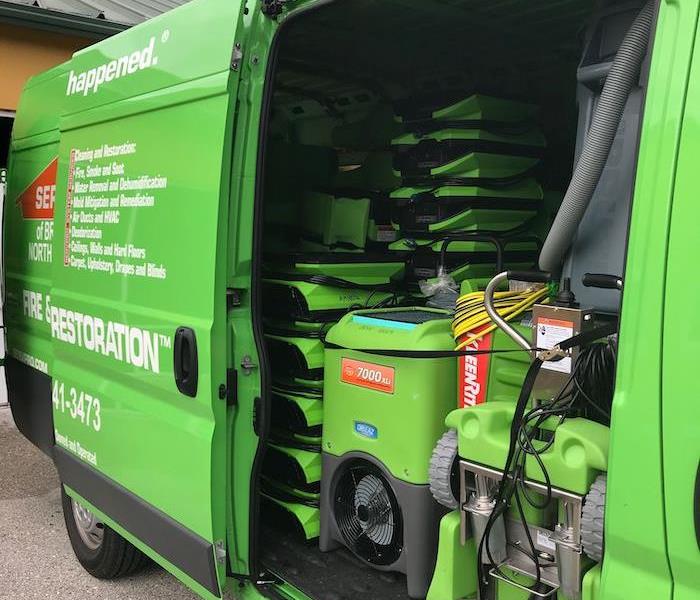 Homeowners have to deal with many things which may include storm damage. Don't let the moisture take over your home. Contact SERVPRO right away.
Homeowners have to deal with many things which may include storm damage. Don't let the moisture take over your home. Contact SERVPRO right away.
Many steps can be taken to make the restoration and repair of a flood-damaged home more efficient and cost-effective.
Understanding the full measure of the flood restoration process for your Little Falls home can ensure that the appropriate professionals get called to respond to these disasters when necessary. Flood restoration involves multiple repair and cleaning stages, both of which our extensive roster of qualified professionals can provide. Understanding what is involved in returning your home to a preloss condition after a flood can show homeowners how vital professional recovery actually is for residences and businesses alike.
When considering how extensive flood damage in Little Falls homes can become, containment and emergency services become vital efforts to begin immediately. Often, these preliminary tasks occur before mitigation or the job scoping phase. Planning is a considerable step and stage before restoration begins, but there are specific actions they cannot wait to be included in this overall restoration agenda. We have several efficient strategies beginning with your communication with our staffed SERVPRO emergency line.
When is the Information About the Disaster Gathered?
As you might expect, our professionals cannot know about damages to your specific residence without first notifying our administrators about the issue. The information you share with our staff emergency line representatives is shared directly with the appropriate parties responding to the disaster. At this stage, it is critical to be as thorough as possible so that we can collect the proper data and relevant facts to ensure that our technicians mobilize from our warehouse with the right equipment, personnel, and products. There are three ultimate ways that we collect the bulk of the data necessary to form our restoration plan for the property:
- Emergency Phone Call – As already discussed, the more that you can share with operators on our emergency line, the better prepared our technicians are for what to expect when we reach the property.
- Job Scoping – We have highly trained project managers who walk through the property damaged by a flood to determine what actions must be taken to restore the home. We can also use this phase to document total losses of structures and contents or indicate where further measures might be required in these areas.
- Conversations with the Customer – No one knows your property as well as you do, so we often lean on the information provided by our customers to prioritize what actions get taken first.
What is a Staging Area?
One of the efficient recovery approaches that our SERVPRO technicians utilize is staging areas. These get constructed in unaffected areas of the home nearby to where the bulk of the work and cleaning must occur. The objective of establishing a clean room to store equipment and personal protective gear is to have these items accessible as they are needed. We can limit trips in and out of the house by bringing in all of the necessary equipment, products, and devices into this staging area. The primary advantages of establishing this cleanroom between your home and its damaged areas are:
- Efficient
- Convenient
- Prevents Cross-Contamination
- Near to Drying/Work Zones
What Are Efficient Strategies for Extraction?
Flood losses can be traumatic events in your house, specifically when standing water becomes a pressing concern. In any capacity, pooling can lead to saturation and absorption into the exposed materials of contents nearby. Extraction becomes a critical effort for our responding technicians because this removes the standing water threat to allow for more focus drying, cleaning, and other recovery actions. There are several extractors common to removing natural flood water from a property, whether inside the house, in the crawl space area, or even more inaccessible locations. These approaches include:
- Trash Pumps – Gas-powered trash pumps can often be an ideal choice for removing natural flood water because of these units’ ability to remove smaller solids and debris.
- Wet Vacuums – Extractors like wet vacuums are a more versatile choice, as these can run several different attachments such as carpet wands, squeegee wands, or work independently to remove water below two inches in depth.
- Subcontractor – Threat of contamination can be a motivator to choose a subcontractor where blackwater incidents might be overwhelming for the equipment available to our SERVPRO team.
Many initial tasks must occur between the potential for contamination and leftover bulk materials immediately following the disaster. Our SERVPRO of Clifton team has motivated and helpful water restoration technicians and cleaning specialists to help address drying and restoring the property “Like it never even happened.” Give us a call today at (973) 928-3705.
Learn the History of Christmas in Clifton and New Jersey
12/14/2020 (Permalink)
 Call SERVPRO to remove the groundwater from your Clifton home while you enjoy the Holiday Festivities
Call SERVPRO to remove the groundwater from your Clifton home while you enjoy the Holiday Festivities
Find Out More About Clifton at the Montclair History Center
On 19 December, the Montclair History Center is hosting a presentation on how Christmas and other Winter holidays have been celebrated going back to the 18th century and ending with this year’s virtual festivities. This annual tradition is part of the History at Home feature usually given at the Crane House and Historic YWCA and is sponsored by the Montclair Garden Club.
Updating Clifton Traditions but Keeping the Same Spirit
The Garden Club members are still decorating the YWCA for the 26th year, and they are not going to let COVID-19 stop them. After all, if the flooding from the last few years did not keep them away, then this is not going to dampen their enthusiasm either. Physical attendance is limited, but the Club quickly adapted and has a Zoom presentation that will still be a special part of the season for many area families
No matter what the season may be, SERVPRO of Clifton is here to help our community with flooding damage mitigation and to help restore homes after any disaster. To schedule one of our response teams, call us today at (973) 928-3705. Happy Holidays Everyone!
When Flood Damage Occurs in a Clifton Property, Where Can Property Owners Seek Help?
12/5/2020 (Permalink)
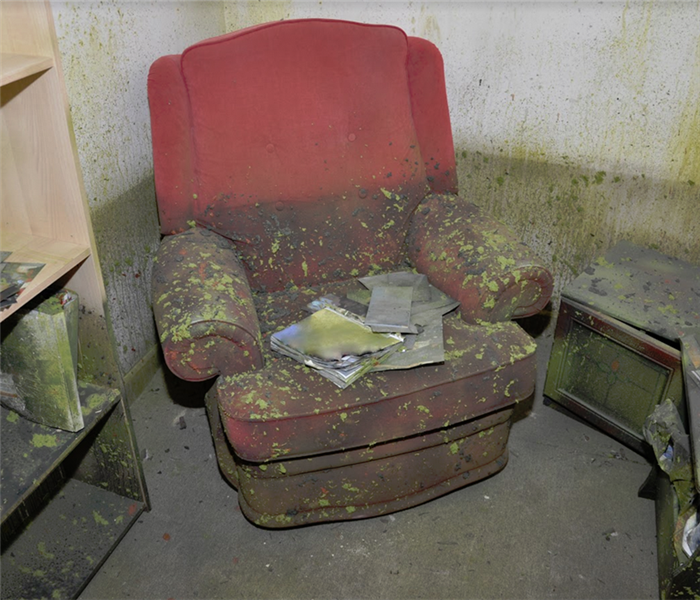 Flood damage in your home can cause long lasting issues that are hard to remedy. Contact SERVPRO for professional remediation and mitigation services.
Flood damage in your home can cause long lasting issues that are hard to remedy. Contact SERVPRO for professional remediation and mitigation services.
Flood Damage Restoration is a Task that Requires Advanced Equipment and Expertise of a Reliable Restorer in Clifton Like SERVPRO.
Floodwater in your Clifton property can soak into your carpet and pad, seep into your furniture, warp your wooden floor, and cause mold growth within 24 hours. However, if you involve a reliable restorer immediately, the unfortunate takes place, we can minimize further damage from occurring. SERVPRO technicians can use innovative equipment to restore your property to its pre-flood state.
What does flood damage restoration involve?
It is crucial to act quickly to remove the potentially lasting effects of storm flood damage in your Clifton property. Flood damage restoration involves several steps, including:
- Floodwater extraction from flooring and other affected surfaces.
- Thorough property cleaning and decontamination
- Using specialty equipment to dry out moisture
- Mold removal
- Deodorization
How do you remove water?
To avoid potential secondary damages from occurring in your residence, SERVPRO technicians can extract the floodwater in your home effectively. We can use portable pumps to ensure fast and efficient flood water extraction. However, before setting up a pump, we make several considerations, including:
- If the fluid contains solids
- The water level in your home
- The vertical distance that the water must be carried to reach the extraction equipment.
If we discover that the water levels are high and contain soils, we can use a self-priming trash pump for extraction. The diesel-powered equipment can pass solids of up to 1 ¼". Using a 4" to 24" hose, the machine can move between 1000 and 16000 gallons of water per minute.
Does the drying process take long?
With our edge-cutting techniques and advanced equipment, the drying process may take a few days. Even after conducting thorough water extraction, the moisture left behind can cause severe damage to your property. Wood and concrete soak up surprising amounts of water. Drying such materials can take a while.
We can use several axial air movers to increase airflow in the property. The equipment brings in dry air from outside to replace the humid air in the property. That increases the rate of evaporation to speed up drying.
Taking quick action after flooding occurs in your property is essential since water can cause irreversible damage to your home and valuables. Contact SERVPRO of Clifton at (973) 928-3705 for quick restoration. We’re Faster To Any Size Disaster.
Click here for more information about Clifton.
Celebrating 100 Years of Clifton
11/27/2020 (Permalink)
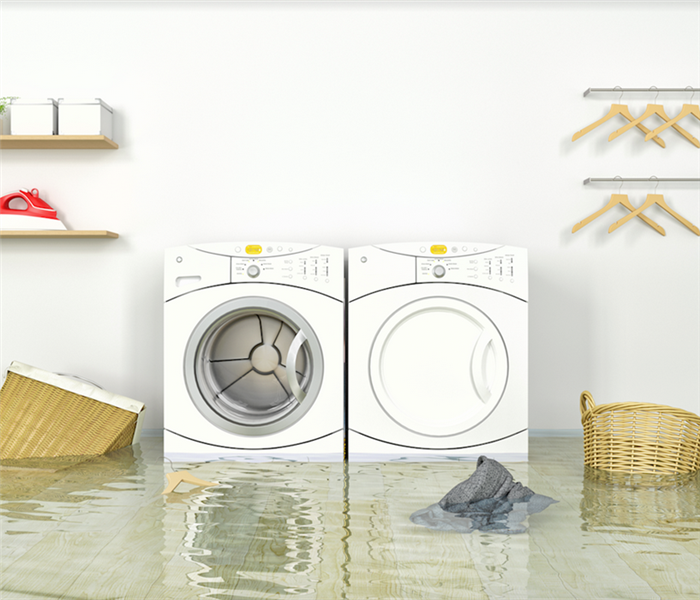 When your basement is flooded, time is of the essence. Contact our certified team today for effective water removal efforts.
When your basement is flooded, time is of the essence. Contact our certified team today for effective water removal efforts.
The Clifton area has steadily grown since its founding in 1917 as a suitable alternative to living in nearby New York City.
In 2017, Clifton celebrated 100 years as a city. This event not only showcased the longevity of the municipality but all of the obstacles and hurdles that officials had to overcome to reach this point. From the earliest co-existence with inhabitants of the Passaic region to the industrial boom that would still see steady growth in population from one decade to the next, there is a lot that even long-time residents of Clifton do not know about the city.
The Growth and Evolution of Clifton
While the city itself was chartered in 1917, documents go back as far as 1679 when settlers were gifted a deed for 11,000 acres of land where Clifton now sits on the Passaic River. White settlers found their way to the region from Holland, Sweden, and other European countries. This foundation for the area's demographic continues to be prevalent in those that have lived in the region for multiple generations.
When the city itself was founded, New Jersey had long since been a state. While no one knows for sure, it is believed that the name Clifton comes from the visible cliffs of Garret Mountain, which sits behind many of the homes constructed along Valley Road. After 50 years, rezoning efforts made it possible for the city to accommodate as much as 130,000 residents in the decades to come. While this has not yet been achieved, the city's dynamic and population continue to change, and the landscape of businesses, manufacturing facilities, and commercial properties also change the same.
Climate and Conditions for the City
Because of the proximity to significant bodies of water like the Passaic River and even the Hudson River some 12 miles away, there are many weather events and circumstances that can continually impact Clifton homes and businesses. Flooding is one of these situations and can result from post-snowmelt circumstances or hurricane-grade torrential rainfall. Our SERVPRO professionals stay prepared for storm damage emergencies as a large loss recovery team.
The region's climate has always made the soil and area favorable for growing during certain seasons of the year. Unlike tropical climates you might see in the south, Clifton's winters can be bitter cold and ruinous to crops and plant life. While often average temperatures do not fall beneath 24 degrees, cold snaps can potentially damage properties through unexpected effects like freezing pipes.
Shopping and Attractions for Passaic County
Apart from attracting potential homebuyers with a closer commute than many other popular New York City metropolitan area cities and towns, several other attractions and shopping experiences can draw in travelers passing through and tourism to the area. One such location is the Clifton Commons Shopping Center with countless stores, shops, and restaurants for all tastes. Upscale retail locations can also be found at the Promenade Shops.
While much of the region has become less and less the rural countryside that it used to be back when the original 11,000 acres were gifted for settling by the indigenous people, Clifton has two functional farms that continue to produce fresh products. The City Green Farm Eco Center focuses on educated urban communities on the advantages of growing your food and healthy lifestyles. The family-run Ploch's Farm has been operating since 1867, offering fresh products for consumption and fun activities for visitors like picking your own pumpkins from the patch and corn mazes in the appropriate season.
The Allure of NYC and Newark
Much of the attractiveness of Clifton for potential residents is the proximity to New York City. As one of the world's largest cities, New York City has a metropolitan area spanning multiple miles from the heart of boroughs like Manhattan. Only being 12 miles from Midtown, our municipality in Passaic County has become a more affordable and quieter alternative to seeking an apartment, condo, or house within New York City limits. Through state routes 3 and 46, travelers can reach one of the multiple bridges across the Hudson to Manhattan.
In the same sense, those living in Clifton have a short 20-minute commute to Newark to the south. Though, through the manufacturing facilities that Clifton has grown known for, including metals and plastics, less are having to make the commute into the bigger city for work and able to find gainful employment within Passaic County.
Flood Removal Services by Competent SERVPRO Professionals
Flooding is an unfortunate circumstance that many Clifton homeowners must contend with at different points of the year. Whether it is ice damming on the roofs of houses or rising creeks and streams after snow melts or torrential rainfall, the immediate impact of water on a property cannot get ignored. We have a fast and reliable response to begin mitigation services for flood water removal as soon as possible.
Natural flooding often requires specific recovery tools to resolve, many of which must remove both water and any solids or debris that could be contained within it. Flood removal in the basement of Clifton homes is often where natural floodwater can collect. Self-priming trash pumps are typically the suitable choice, as they can have a higher head and discharge capability than many of the truck-mount extractors despite their lessened output.
One of the advantages of choosing our SERVPRO professionals to help with post-flooding recovery in your home is our in-house general contractor knowledge. These professionals on our roster can help in multiple ways to begin repairing and restoring your home alongside vital mitigation efforts like extraction and debris removal. Our technicians can help with various emergency services, including:
- Structural repairs
- Tarping
- Board-up
- Content inventory and relocation
- Controlled demolition
Despite how devastating flood losses can be, having dedicated and experienced professionals that can help you through the restoration process is valuable. Our goal is to keep your out of pocket expenses as minimal as possible, and that begins with our fast response after you call our SERVPRO of Clifton team at (973) 928-3705.
My Property Sustained Flood Damage After a Storm. How Do I Restore It?
8/19/2020 (Permalink)
 Flooding is no match for SERVPRO. We are equipped and ready at a moment's notice to restore your home.
Flooding is no match for SERVPRO. We are equipped and ready at a moment's notice to restore your home.
Call SERVPRO Technicians in Little Falls to Handle the Storm Flood Damage in Your Residence.
As a homeowner, you need to know what to do after a storm causes flooding in your residence. An experienced flood damage mitigation company such as SERVPRO can help you to restore your Little Falls home to its pre-incident state.
What can happen in my house after it floods?
Floodwater can weaken or completely ruin flooring, walls, and ceilings, among other structures. Do not hesitate to contact restorers to mitigate the storm flood damage in your Little Falls home. If you wait long before hiring a restoration firm, there is a chance for mold and other secondary damage occurring.
What can I expect from your flood remediation services?
When you contact SERVPRO technicians to perform flood damage cleanup and remediation, our team can come to your residence ready to start working right away. We usually begin the flood remediation process with a damage assessment to determine the extent of the destruction.
When inspecting a home, we consider how many materials are contaminated, if the materials are non-porous or porous and if it is possible to ventilate the area. Our technicians also consider if it is necessary to perform containment and if we can decontaminate and restore the affected materials. It may be impossible to restore some materials like carpets. In that case, we can remove and replace them. We offer an estimate that outlines the cost of our repair and restoration services.
What does flood restoration involve?
Flood remediation and restoration services depend on the severity of the damage. Generally, they involve the following:
Debris removal
Water removal
Water damage repair
Disinfection
Deodorization
We have trained our technicians to clean up and repair flood-damaged properties to their preloss condition. We can mitigate the damage and rebuild the affected areas, enabling you to save time and money. We are fully equipped with industrial-strength water removal and drying equipment such as:
Self-priming trash pumps
Centrifugal air movers
Refrigerant dehumidifiers
Should I turn off the equipment?
The restoration equipment we use can run for days without being turned off. It does not overheat. Unless our technicians advise you otherwise, you should let it remain running until we complete the restoration process. Our technicians monitor the equipment and job progress daily, adjusting, and moving the equipment as necessary.
Flooding can lead to extensive secondary damage if you delay the restoration process. Call SERVPRO of Clifton at (973) 928-3705 for efficient flood restoration services. We’re Faster To Any Size Disaster.
Find more information about Little Falls.
What is The Best Ventilation System to Use for Drying after a Flood in Little Falls?
7/18/2020 (Permalink)
 For 24/7 assistance after a flood, contact SERVPRO of Clifton!
For 24/7 assistance after a flood, contact SERVPRO of Clifton!
SERVPRO Uses Various Devices for Your Little Falls Home Moisture Removal Goals
A flooded home in Little Falls is devastating, but it is crucial to buckle down to go about the restoration process quickly. In all likelihood, your home requires airflow and extensive ventilation to ensure proper drying and help keep odors at bay. The best way depends on your particular location, weather, and security of your home. An open system uses outside air to assist in the process, and a closed system prevents outside air and air coming from unaffected areas of your home.
Should I Use Drying Zones During the Drying Process?
SERVPRO Assesses Your Unique Situation to Determine Drying Zones
Extensive flood damage in your Little Falls home typically means that most of the first floor in your home sustains damage. However, if you live in a two-story house, technicians may seal off the second story with 6-mil polyethylene to limit airflow within the structure. Sealed drying zones are also beneficial if some rooms took in more floodwater than others, requiring different drying techniques.
What Are the Advantages and Disadvantages of an Open Drying System?
Advantages
• The evaporated moisture pushes outside of your home.
• Potential to use less energy because technicians incorporate outside air.
• Outside air needs to be significantly drier for an open system to work.
Disadvantages
• If weather changes, your drying system may be in jeopardy.
• Leaving windows and doors open may pose a security risk if you leave your home.
What Are the Advantages and Disadvantages of a Closed Drying System?
Advantages
• Outside weather is not an issue.
• Allows for precise drying measurements enabling technicians to reach their drying goal effectively.
Disadvantages
• May take longer to set up.
• It can use more electricity.
For 24/7 assistance after a flood, contact SERVPRO of Clifton at (973) 928-3705.
Flood Damage Restoration In Clifton
2/20/2020 (Permalink)
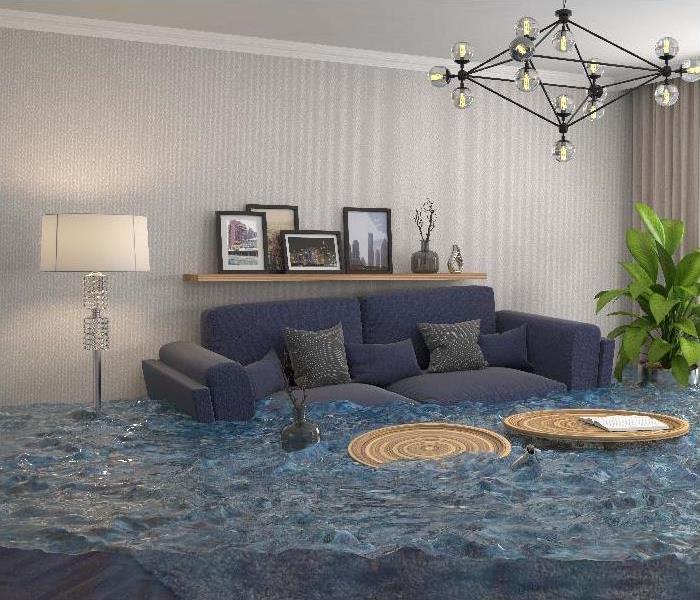 Flood restoration from start to finish is a multi-faceted and challenging task.
Flood restoration from start to finish is a multi-faceted and challenging task.
Three Phases Clifton Residents should consider for Flood Damage Restoration
Flash flooding can be devastating for homeowners. However, with the right attitude and assistance, you stand a strong chance of getting your home back to its preloss condition. When disaster strikes your home that are several jobs to take care of that can go a long way to reducing permanent losses. Shutting off the power supply is a vital safety step that can prevent electric equipment from blowing out and prevent electrical fires in the interim. Contacting both your insurance provider and a professional restorer can also pay dividends in the long run.
There are different phases to flood damage recovery in your Clifton home. The first step is emergency services or mitigation. These may be robust jobs like moving furniture out of harm's way, closing and sealing doorways to prevent water migration as well as collecting relevant documents or valuables. These duties are within the scope of the average homeowner, providing that due care and attention is taken.
When entering a flooded property, be aware of potential hazards as well as contamination in water. If you have any doubts, it is best to leave it to a professional. SERVPRO technicians can perform emergency draining of a flooded property using a combination of extraction tools and pumping equipment. Once the reduction of standing water levels is complete, there is less chance of slip and trip hazards as well as structural collapse. However, a thorough examination of ceilings, walls, and flooring needs conducting to ensure the property is sound.
The next phase of flood restoration involves remediating any immediate concerns in the building. These steps are necessary when water migration is occurring or when there is contamination in the property. Remediation tasks include industrial cleaning or controlled demolition of non-salvageable items and materials. SERVPRO can thoroughly disinfect your home to destroy any residual microbes, including mold, bacteria, and viruses.
After remediation SERVPRO can perform the restoration, the disposal of any building materials is replaced with new material including drywall and insulation. We can dry the structure using a combination of dehumidifiers and rapid-air movers to lessen the chances of secondary damages and return to the property every twenty-four-hours to assess improvements. The last step involves refinishing surfaces, contents, and deodorizing to ensure your home returns to a preloss condition, “Like it never even happened.”
Flood restoration from start to finish is a multi-faceted and challenging task. For expert assistance contact SERVPRO of Clifton.
For more about Clifton click here.
How Technology Helps With Flood Water Removal in Clifton
1/6/2020 (Permalink)
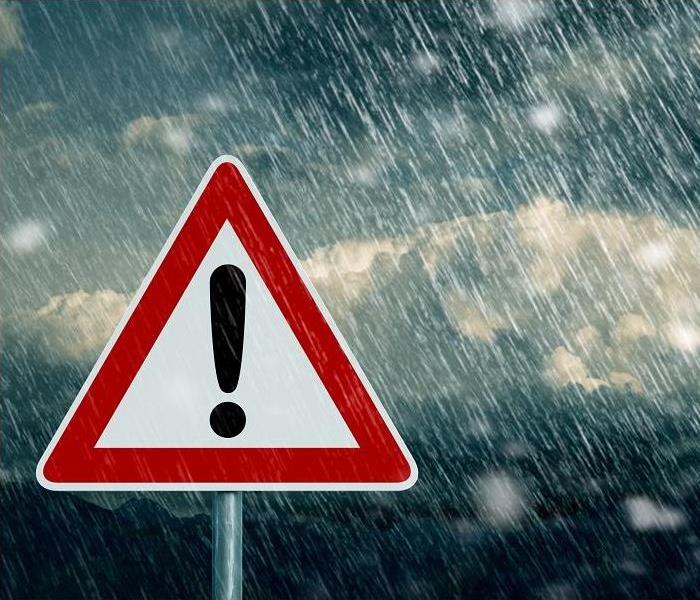 Flooding can occur any time during the year. SERVPRO has the technology to locate hidden pockets of water and restore your home.
Flooding can occur any time during the year. SERVPRO has the technology to locate hidden pockets of water and restore your home.
Flood Removal Inspection Equipment Can Speed Up Recovery of your Clifton Home
Floodwater can cause significant damage to a home environment. These situations can be even more painful when restorers need to remove further components to repair harm. Interference with structure and contents can increase the amount of time it takes for the home to make a full recovery. Demolishing sections of drywall, for example, creates further damage and lengthens the procedure because restorers must then cut and replace the area.
At our company, we seek to use non-invasive measures in your home as far as possible during flood removal recovery in Clifton. This approach leads us to use advanced analytic equipment during the inspection phase. When your home soaks in floodwaters, there are visible elements you notice like standing water levels or staining. However, there are also invisible elements like water migration, cavity saturation, and rising moisture content of materials.
Here at SERVPRO, we can assess the invisible elements using inspection equipment. Thermal imaging cameras use infrared light frequency bands to measure temperatures of a surface. While these do not detect moisture, they can detect the after-effects of moisture on a surface, which is useful in assessing whether rising moisture content or migration is occurring. If water is residing in wall cavities, for example, it is likely that the surface temperature drops, which can then be picked up on by a thermal imaging camera.
As far as non-invasive methods are useful, SERVPRO seeks to use them. Unnecessary removal of structural components during inspection can increase the turnaround of a restoration significantly. While it is often necessary to remove the structure to thoroughly dry property and reduce secondary water damage, SERVPRO can use thermal imaging to ensure we only remove structure when needed. In some cases, we can use non-invasive drying tools such as injectidry systems to restore the property.
Make sure your recovery time after a flood is as short as possible. Contact SERVPRO of Clifton at (973) 928-3705.
More about Clifton.
Mitigating Home Theater Flood Damage in Little Falls
12/16/2019 (Permalink)
 Little Falls let us be the one to assist your Little Falls flood damaged home theater.
Little Falls let us be the one to assist your Little Falls flood damaged home theater.
SERVPRO knows best when it comes to your Little Falls flood damage.
While most homeowners have precautions in place for dealing with flooding when it occurs, one thing that can be harder to plan for is the cost of a disaster. As much as 70% of New Jersey real estate has needed repair at least five times due to flood damage. Average payouts per claim have been estimated at $25,000, a staggering expense for homeowners rebuilding after a disaster.
If you find flood damage in your Little Falls home, IICRC-certified SERVPRO technicians are always available to restore your home to a preloss condition. Both technicians and franchise owners undergo extensive training in fire, water, and mold damage mitigation and remediation. Through thorough education and training in contemporary disaster cleanup measures, technicians help homeowners save money and possessions whenever it is safe and feasible to do so.
Tips for Handling Electronics
If you have an entertainment center or home theater that has been affected by flooding, here are some tips for salvaging your electronics:
- Do not turn on devices. Turning a device on after it has been affected by water is more likely to ensure that it never turns on again.
- Do not dry electronics in microwaves or ovens. Exposure to the high heat from these items can damage devices further, so avoid using these to save your electronics. Wait for certified technicians who can handle electronics to help you.
- Do not open devices to dry them. It is more likely that you can damage internal components by opening devices, especially after they have been affected by water.
How SERVPRO Can Help
There are several crucial factors to keep in mind for restoring electronics, and SERVPRO technicians receive thorough training in observing these measures. Low humidity and adequate temperatures are crucial to the success of any restoration effort. For example, technicians can set up dehumidification chambers for drying CDs, DVDs, and Blu-ray discs, as well as other media. This measure helps maintain a relative humidity of approximately 25%. To minimize corrosion, technicians ensure that electronic devices like computers and televisions do not cool below the dew point. But, that is all for mitigating water damage to sensitive electronic components. SERVPRO can recommend, or our customers can select their own specialty service to inspect and repair the internal workings.
SERVPRO of Clifton has the tools and techniques you need to make your home look, "Like it never even happened." If you need rapid disaster cleanup, call (973) 928-3705 today.
To learn more about Little Falls, click here.
We Can Restore Your Flood Damaged Clifton Apartment
10/28/2019 (Permalink)
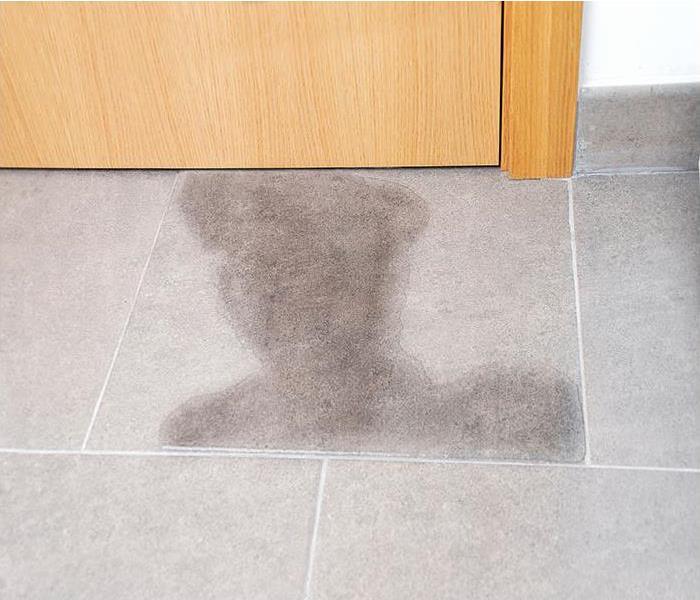 Give us a call anytime at (973) 928-3705.
Give us a call anytime at (973) 928-3705.
Reducing the Severity of Flooding in Your Clifton Apartments
As the property manager or owner of any of the Clifton apartment buildings, you have many people to consider when disasters strike. From structural damage that can allow water penetration to rising waters after several days of steady rainfall, the possibility of flooding is a persistent threat that should not get ignored. As much as you might have a custodial and maintenance staff to handle smaller scale concerns that arise, flood damage should get handled by certified restoration professionals.
Our SERVPRO professionals have accreditations through the Institute of Inspection Cleaning and Restoration Certification (IICRC) in every recovery niche for flood damage to Clifton properties. Nearly our entire staff has Water Restoration (WRT) certification, and some of our specialists have secondary endorsements with Applied Structural Drying (ASD), Applied Microbial Remediation (AMRT), and Commercial Drying (CDS.) These experienced team members can help to begin mitigation work quickly to reduce loss in the building and protect more of the units in the complex.
In the earliest stages of mitigation, our professionals must begin with extraction where it is necessary. We have multiple tools and equipment to complete this task, including our wet-vacs with extraction wands and our portable sump pumps ideal for water removal in units above the ground floor of the building. Once the standing water has gotten addressed, including the saturation of carpeting in hallways and individual units, our SERVPRO technicians can begin the critical process of drying up the damage.
We must meticulously inspect any damaged areas with infrared imagery and moisture detection devices. These tools can identify moisture pockets that our team must address before the drying phase completes. We have positive pressure systems like our InjectiDry unit that can dry out structural cavities between units and rooms while maintaining a minimally invasive approach.
Reducing the loss to your renters is a priority of any apartment property manager, and that is why so many have chosen the fast response and expertise of our SERVPRO of Clifton team over the years. We have the equipment and training to make losses “Like it never even happened.” Give us a call anytime at (973) 928-3705.
For more about Clifton click here.
How Flooding Damages Furnaces in Little Falls Homes
10/15/2019 (Permalink)
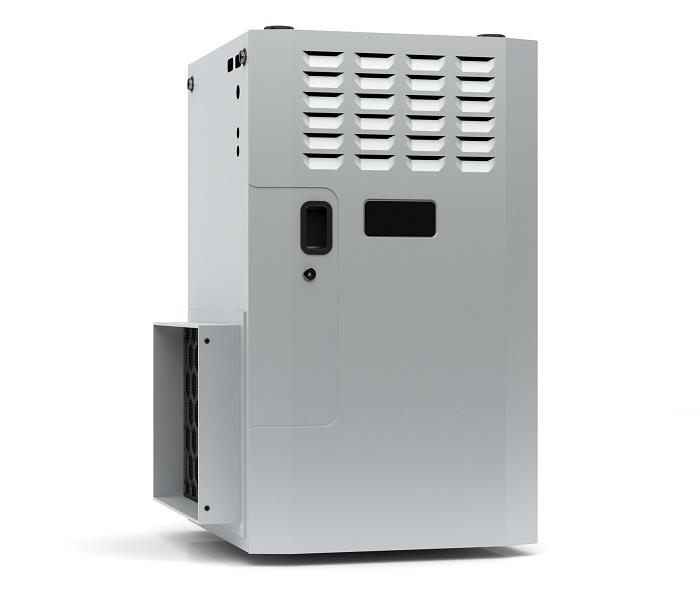 Inspect the area around your furnace often for signs of moisture and water damage.
Inspect the area around your furnace often for signs of moisture and water damage.
How to Protect Your Furnace From Flood Damage in a Little Falls Home
Homeowners invest in their HVAC system, and in places such as New Jersey where temperatures drop to the sub-zeroes rapidly in the winter, having a fully functioning furnace is vital.
Flood damage in a Little Falls basement can leave more behind than water to cleanup. If the home has a mounted furnace directly on the basement floor, it is in danger of extreme amounts of damage, and the average replacement cost of an HVAC ranges into the thousands of dollars in most cases.
Elevate Your Furnace
Whether it is in a basement, crawlspace, or mechanical closet, you can set up the first line of defense against water loss by merely having your HVAC placed on an elevated platform anywhere from 10 to 24-inches in height keeps the unit out of the way of the majority of floodwater events.
Use Technology for Water Detection
Admit it; you do not go into your basement and certainly not a crawlspace regularly. The use of water sensors installed near the furnace alerts you, usually via a phone app, while others rely on an alarm, to water intrusions in the vicinity of where the placement of the sensor is. This assists in limiting loss by allowing for fast cleanup efforts.
When Flood Loss Happens Get Professional Assistance
When flooding happens in your home, it is vital to engage a restoration services company. SERVPRO technicians undergo extensive training in the safe cleanup and drying of groundwater. They have specialized equipment and techniques for drying out basements and closed in areas such as crawlspaces.
Prevention of Additional Loss
SERVPRO technicians carefully inspect properties after cleanup to ascertain there are no remaining water odors, which can indicate additional moisture requiring removal. They use different types of detection equipment to scope the property and confirm that all flood loss areas are dry. Mold is another threat, and spores have the potential to germinate as fast as 24 hours after flooding in the home. Technicians perform protective treatments with both antimicrobial cleaners and sealants as needed.
Flood damage needs fast action to limit loss, call SERVPRO of Clifton at (973) 928-3705 when you need a rapid response. The technicians are available 24/7 to make the water loss in your home, "Like it never even happened."
More about Little Falls.
We Discuss The Tips For Protecting Your Home After A Fire In Your Little Falls Home
9/19/2019 (Permalink)
 “Like it never even happened.”
“Like it never even happened.”
Tips For Protecting Your Home From Fire Danger After Flood Damage In Little Falls
Although fire and water seem like opposites and you should not have to consider one disaster on top of another after flood damage hits your house. The danger of a structural fire is real, and there are steps homeowners can take to protect their property.
When a Little Falls home has flood damage, homeowners should immediately shut off the electricity to the house to help negate the risk of electrical fires. This reduces the danger of surges and sparks. This action will not hinder cleanup efforts in the slightest as SERVPRO technicians have industrial generators to power their equipment for the water loss cleanup.
Unplug and Move Electrical Devices
If you have items in the water loss area that have not received direct water damage, unplug and move them into a dry, safe area. Secondary damage from extended exposure to high humidity has the potential to damage consumer electronics. Do not test wet devices, instead show water-damaged electronics to the SERVPRO job site coordinator, and they can arrange for a professional service to inspect and if possible, repair your items.
Turn off the HVAC
The potential for airborne microbes and contaminants is part of flood damage, and you can keep it out of your ductwork by turning off the HVAC. SERVPRO technicians inspect and clean ductwork if necessary during the floodwater mitigation process.
Remove Flammable Substances
Gather up cleaning, lawn care chemicals, lighter fluid, and pesticides and remove them to a safe, dry place. If these flammable substances leak or spill into the floodwater, a spark could set off a devastating structural fire.
Stay Alert for Downed Power Lines
The danger of fire not only comes from the inside of the home but outside too. Watch out for downed power lines or exposed wiring as expose to water may spark a fire that could spread to your property.
Contact SERVPRO of Clifton at (973) 928-3705 when you need safe, thorough flood damage cleanup from knowledgeable, certified technicians that make the water loss “Like it never even happened.”
For more about Little Falls click here.
Are You Storing Water Damage in Your Clifton Attic?
5/8/2019 (Permalink)
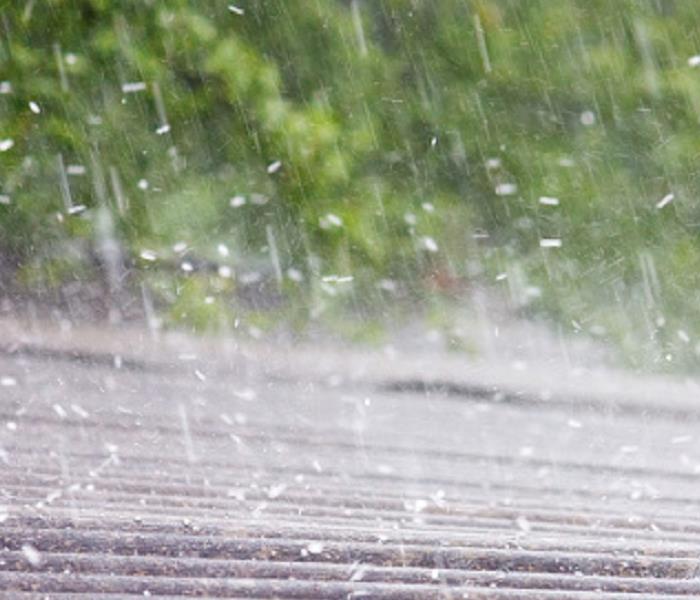 Strong spring and summer storms can damage your roof, allowing water to enter your home.
Strong spring and summer storms can damage your roof, allowing water to enter your home.
Restoring and Repairing Flood Damage in Your Clifton Attic
Severe weather systems that can sometimes affect the Clifton area of New Jersey offer strong winds capable of hurdling debris and tearing off roofing materials. Once vulnerabilities exist in the exterior defense of your house, it is a direct path for water and elemental exposures to occur that can allow situations like flooding. For the attic of your home, this water damage can spread quickly to the point of getting out of control, and this problem can continue to worsen without the appropriate intervention.
Among the first steps that must get taken when flood damage is occurring in your Clifton attic from a compromised roof is to get competent and qualified contractors on the scene quickly for temporary solutions. Our SERVPRO rapid response team features licensed contractors that can offer emergency board up and tarping services to correct vulnerabilities in your home’s construction to allow mitigation work to get started.
Once our professionals have arrived at your flood-damaged address, we must get to work quickly on extracting water from the attic space unless this damage has already spread to the floor beneath this area of the property. The SERVPRO team can utilize moisture detection equipment and thermal imagery to locate moisture between floors of your home and into spaces of the attic that are challenging to access.
Because mitigation work needs to wrap up as quickly as possible, our team works to ensure that we arrive within hours of a call to get this critical extraction and drying efforts started. Once we have managed these effects inside of the house, our licensed contractors on the team can begin their efforts of rebuilding and restoring the damaged roof that allowed the flooding.
We offer every customer a comprehensive approach to recovery when flooding has occurred, and our qualified and experienced SERVPRO of Clifton team is available 24/7 to help. You can count on our technicians to make all of the effects of flood damage “Like it never even happened.” Give us a call anytime you need us at (973) 928-3705.
Clifton was incorporated in 1917. Read more here.
Prepare for a Winter Storm Before it Hits
1/15/2019 (Permalink)
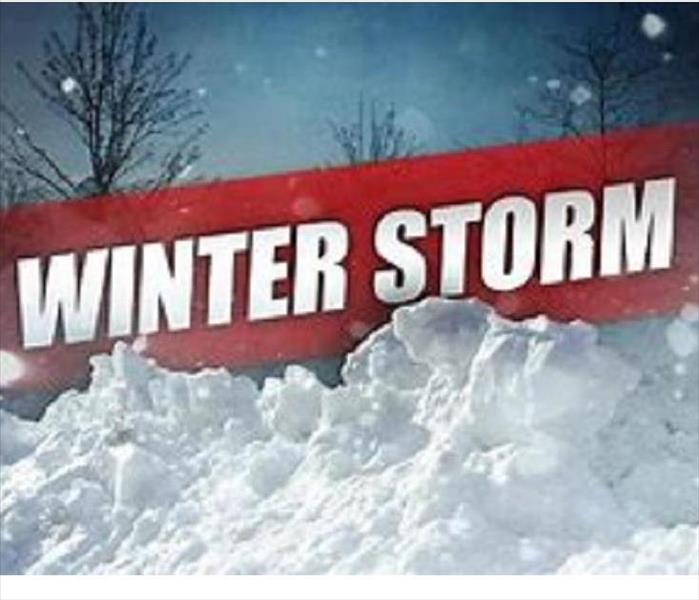 SERVPRO of Clifton ~ 973-928-3705
SERVPRO of Clifton ~ 973-928-3705
Winter is on us and winter storms are expected in the Clifton NJ areas.
The best way to keep your family and yourself safe is to plan and prepare before the storm hits.
Listed below are tips and suggestions for preparing your family for upcoming winter storms.
Communication: If a power outage should occur, make sure to have the following:
- Cell phone, portable charger, extra batteries
- Battery powered radio with extra batteries, for listening to local emergency instructions
- Find out how your community warms you about severe weather (siren, radio, television, websites)elderly neighbors and family members
Heating: Turning on the stove for heat is not safe
- Have at least one of the following heat sources available in case the power goes out:
- Extra blankets, sleeping bags, winter coats
- fireplace up to code and extra dry firewood
- portable space heater or kerosene heaters
- Have the following safety equipment:
- Chemical fire extinguisher
- Smoke alarms in working order
- Carbon monoxide detector in working order
- Generators should be located at least 20 feet from any window, door or vent and in a space where it will not get wet from rain or snow (Never use generators indoors or inside garages or near any intake to the home.)
- Do not store gasoline indoors
Food & Safety: Have a weeks worth of food, water and supplies
- Drinking water
- Canned/ no-cook food
- manual can opener
- baby food / formula (if baby in house)
- first aid kit
- ice melt for sidewalks or walkways
- Flashlight and extra batteries
- battery powered lamps. Avoid using candles if possible
Household Water Supply:
- Leave water taps opens slightly so there is a continuous drip
- Keep indoor temps warm
- Open cabinet door under sink to allow warm airflow
Should your pipe freeze and burst during a storm, call the service professionals at SERVPRO of Clifton to clean and dry your structure to prevent further damage,
SERVPRO of Clifton
973-928-3705
Get Your Home Winter Ready
1/4/2019 (Permalink)
Making preparations ahead of time can prevent fierce winter storms from causing havoc to your home.
Getting the Outside Ready for Winter Storms
Trim or Remove Trees
- Trimming: Trimming is far less expensive than full removal. Crews can thin out the branches to reduce the “sail effect” when those high winter winds blow. Trimming can also can balance out the tree’s load and keep one side from being heavier than the other, a condition that may topple the tree.
- Removing: Tree removal can entail a significant cost, especially in dense, metro areas where mobility is limited.Many communities require that you apply for a tree removal permit or at least put in a written notification. In many cases, the permit or notice must be accompanied by an arborist’s report stating that removal is required.
Check Roofing and Flashing Stability
High winds can loosen roof shingles. Walk your roof and inspect it carefully. Shingles that are obviously loose should be replaced by a qualified roofer.
The condition of the flashing – the metal sleeves around the chimney and other roof protrusions – is more difficult to visually determine. Have a contractor or roofer inspect these areas.
Promote Drainage Away from House
When storms hit, massive amounts of water are directed at your house over a short period of time. Re-grade the soil around your house so it declines away from the foundation.
Clean and Repair Gutters and Downspouts
One source of water damage to foundations and basements is downspouts that force water straight into the ground. This can be easily and cheaply fixed by adding plastic downspout drainage lines that deposit the water away from the house. Fix or replace gutters in the summer. Clean gutters early fall, as soon as all the leaves are off the trees.
Remove Air Conditioners
By the end of summer, window unit air conditioners are no longer needed. A/C units are weak points for water intrusion. Even if there is a tight seal between the unit and the window, water can still enter through the back of the unit.
Clean Wood Fire Burning Chimneys
Wood-burning fireplaces build up an oily substance that can cause chimneys to ignite.
Call the experts if you experience Water, Soot, Smoke or Fire Damage
SERVPRO Of Clifton 973-928-3705
Cleanup and Restoration From Storm Damage
10/1/2018 (Permalink)
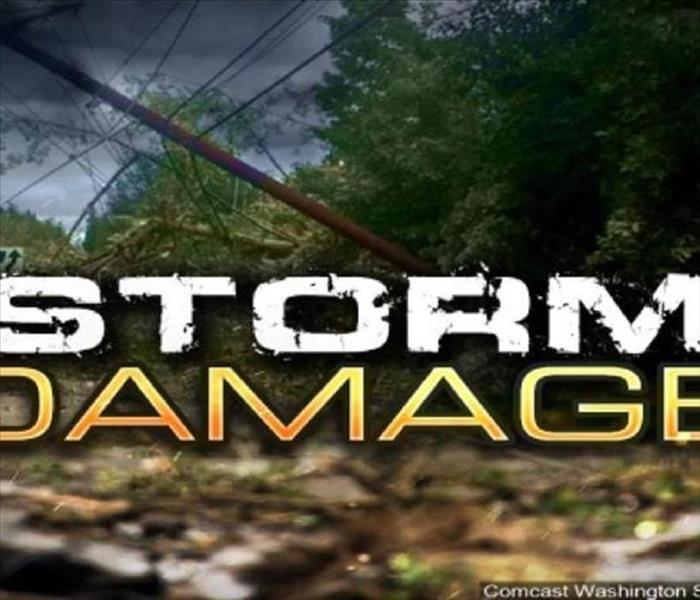 Have Storm or Flood Damage?
Call Us Today ~ 973-928-3705
Have Storm or Flood Damage?
Call Us Today ~ 973-928-3705
Storm and flood damage can be devastating. Immediate action is needed, and you need the company with storm damage experience. SERVPRO of Clifton Professionals have the expertise and the resources to handle any size disaster and can respond immediately to storm and flooding conditions.
SERVPRO of Clifton Professionals
Why Choose SERVPRO of Clifton?
They’re Faster to Any Size Disaster
SERVPRO of Clifton Professionals are dedicated to responding immediately to water and storm damage emergencies. A fast response lessens the damage, limits further damage, and reduces cost.
They're Highly Trained Water Damage Specialists
They specialize in water and storm damage restoration, the cornerstone of our business. SERVPRO of Clifton Professionals have extensive water damage restoration training that enables them to get you back to normal.
- Water Damage Restoration Technician
- Applied Structural Drying Technicians
They Have the Resources to Handle Storms and Disasters
SERVPRO of Clifton Professionals have a national network of over 1,700 Franchises across the country and elite Disaster Recovery Team strategically located throughout the country.
Regardless of the Storm Damage, They Can Help
Storms occur with little warning and can be especially devastating, so you’ll need the company that you can trust to rise to the occasion. Regardless of the type of storm, SERVPRO of Clifton Professionals can handle any size disaster. During catastrophic storms and major events, our Disaster Recovery Team can respond quickly with additional resources.
- Flooding caused by heavy rains
- Hurricanes and tidal surges
- Tornadoes and wind damage
- Ice and snowstorms
- Wild fires
Have Storm or Flood Damage?
Call Us Today ~ 973-928-3705
Protect Your Home From Summer Storms
8/2/2018 (Permalink)
 SERVPRO of Clifton
973-928-3705
SERVPRO of Clifton
973-928-3705
Summer storms can cause a lot of damage to your home. Water damage, broken windows, power outages and even fires are some of the problems associated with summer storms. Damage to your home can be expensive but there are ways to protect your home from costly repairs.
1.) Clean your gutters - Clear any debris from your gutters to make sure all that rain water can easily flow off your roof and away from your home. When water can’t get through your gutters, it pools on your roof and around your house in ways that can cause damage.
2.) Trim your trees - Some of the worst storm damage is caused by falling trees. A healthy, sturdy tree is unlikely to topple in high winds, but one with dead limbs, or disproportionate growth may. Maintaining them will help you protect both your property and the tree itself.
3.) Back Up Your Sump Pump - When heavy rains come, sump pumps can get overloaded. a flooded basement can cause all sorts of damage to your things–especially if it’s a finished basement. Plus, when water covers wiring or electric appliances, things get dangerous. Make sure your sump pump has a battery backup just in case the electricity goes out. You might also consider installing a second, battery operated pump that will come on if the main one fails.
4.) Gather Emergency Supplies -The Red Cross recommends keeping a three-day supply of food and water for your family, and a seven-day supply of any medications. You might also add a battery operated radio, and a car adaptor for your cell phone. Nothing fancy here, no need to build a bomb shelter, just a little stash in a duffle bag or plastic container in the garage or basement.
5.) Secure Windows and Doors - Windows and Doors often get damaged in thunderstorms. Weatherproof windows and doors that are durable enough to withstand harsh climates and weather can avoid such damage.
Hurricane Watch & Hurricane Warning, What's the Difference?
6/27/2018 (Permalink)
During hurricane season it is important to be prepared and know the difference between a hurricane watch and hurricane warning.
Hurricane Watch: A hurricane watch means that hurricane conditions (sustained winds of 74 mph or higher) are possible within the specified area. A hurricane watch is issued 48 hours in advance of the anticipated onset of tropical-storm-force winds in an area.
Hurricane Warning: Hurricane conditions (sustained winds 74 mph or higher) are expected within a specified area. Because hurricane preparedness activities become difficult once winds reach tropical storm force (sustained winds of 39 to 73 mph), the hurricane warning is issued 36 hours in advance of the anticipated onset of tropical-storm-force winds.
When a hurricane watch is issued, you should:
- Listen to a battery-operated radio or television for hurricane progress reports.
- Check your emergency supplies. Make sure everything is stocked and in working order.
- Gas up your car.
- Bring in garbage cans, lawn furniture, bikes, toys, hanging plants and lawn decorations. If possible, disassemble the swings on your child's swing set to prevent unnecessary damage.
- Secure buildings by closing and boarding up windows. Remove outdoor antennas.
- Turn your refrigerator and freezer to their coldest settings so that food will last longer if the power goes out.
- Store drinking water.
- Store valuables and personal papers in a waterproof container.
- Review your evacuation plan with your family.
- Move your boat securely or transfer it to a designated safe area. Use rope or chain to secure the boat to a trailer.
- Use tie downs to anchor your trailer to the ground or your house.
When a hurricane warning is issued, you should:
- Listen constantly to a battery-operated radio or television for official instructions.
- If you are in a mobile home, make sure it is tied down and evacuate immediately.
- Stay inside, away from windows, skylights and glass doors.
- Keep a supply of flashlights and extra batteries handy. Avoid open flames, such as candles and kerosene lamps, as a source of light.
- If you lose power, turn off all major appliances. Too many running appliances can create a power surge when the power is turned back on.
Water and Storm Damage Tips
4/25/2018 (Permalink)
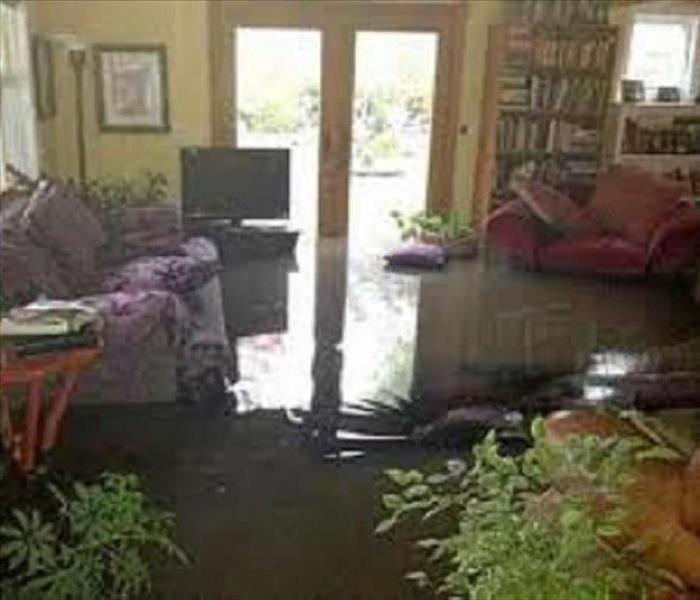 If you have a storm emergency, Call SERVPRO of Clifton ASAP - 973-928-3705
If you have a storm emergency, Call SERVPRO of Clifton ASAP - 973-928-3705
What you can do until help arrives
After any water damage situation, your primary focus should be safety:
- Is it safe to stay in the house?
- Electrical and "slip and fall" hazards are some of the most prevalent concerns.
- Only do activities that are safe for you to perform.
- Wet materials can be VERY heavy. Be careful!
What To Do After Flooding
- Remove excess water by mopping and blotting.
- Wipe excess water from wood furniture after removal of lamps and tabletop items.
- Remove and prop wet upholstery and cushions.
- Place aluminum foil or wood blocks between furniture legs and wet carpeting.
- Turn air conditioning on for maximum drying in summer.
- Remove colored rugs from wet carpeting.
- Remove art objects to a safe, dry place.
- Gather loose items from floors.
What NOT To Do After Flooding
- Don't leave wet fabrics in place. Hang furs and leather goods.
- Don't leave books, magazines or other colored items on wet carpet or floors.
- Don't use your household vacuum to remove water.
- Don't use television or other household appliances.
- Don't turn on ceiling fixtures if ceiling is wet, and keep out of rooms where ceilings are sagging.
Have A Water Damage Emergency? Call SERVPRO of Clifton 973-928-3705
Prepare Your Home for Winter Weather
1/15/2018 (Permalink)
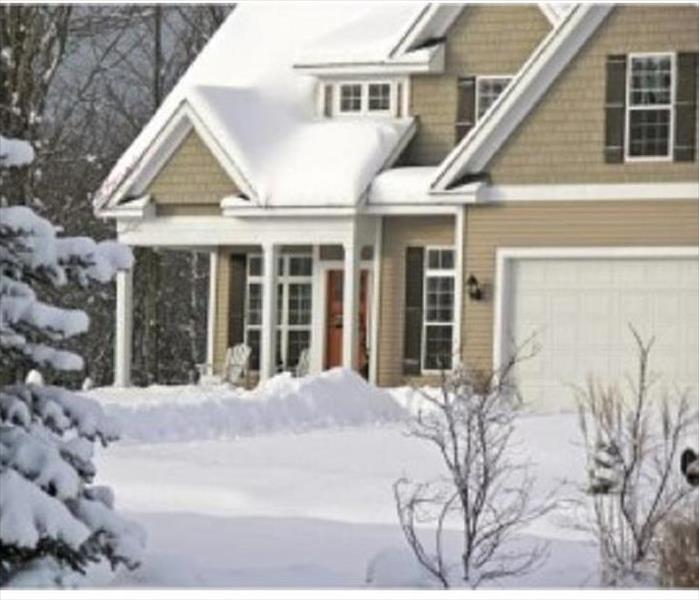 SERVPRO of Clifton ~ 983-928-3705
SERVPRO of Clifton ~ 983-928-3705
By preparing your home now, you can protect yourself and your family from a winter storm.
Follow these tips and suggestions on how best to prepare your home for winter:
- Listen to weather forecasts regularly and check your emergency supplies whenever a period of extreme cold is predicted. Although periods of extreme cold cannot always be predicted far in advance, weather forecasts can sometimes provide you with several days notice.
- If you plan to use a fireplace or wood stove for emergency heating, have your chimney or flue inspected each year. Ask your local fire department to recommend an inspector or find one online.
- If you'll be using a fireplace, wood stove, or kerosene heater, install a smoke detector and a battery-operated carbon monoxide detector near the area to be heated. Test them monthly and replace batteries twice a year. All fuel-burning equipment should be vented to the outside. Each winter season have your furnace system and vent checked by a qualified technician to ensure they are functioning properly.
- If you are over 65 years old, place an easy-to-read thermometer in an indoor location where you will see it frequently. Your ability to feel a change in temperature decreases with age. Older adults are more susceptible to health problems caused by cold. Check the temperature of your home often during the winter months.
- Insulate any water lines that run along exterior walls so your water supply will be less likely to freeze. To the extent possible, weatherproof your home by adding weather-stripping, insulation, insulated doors, and storm windows or thermal-pane windows.
- If you have pets, bring them indoors. If you cannot bring them inside, provide adequate shelter to keep them warm and make sure they have access to unfrozen water.
Checklist
- Insulate walls and attic.
- Caulk and weather-strip doors and windows.
- Install storm windows or cover windows with plastic from the inside.
- Insulate any water lines that run along outer walls. This will make water less likely to freeze.
- Service snow-removal equipment.
- Have chimney and flue inspected.
- Install easy-to-read outdoor thermometer.
- Repair roof leaks and cut away tree branches that could fall on your home or other structure during a storm.
Indoor Safety During a Winter Storm
12/7/2017 (Permalink)
 SERVPRO of Clifton 973-928-3705
SERVPRO of Clifton 973-928-3705
Heat Your Home Safely
If you plan to use a wood stove, fireplace, or space heater, be extremely careful. Follow the manufacturer's instructions and remember these safety tips:
- Use fireplaces, wood stoves, or other combustion heaters only if they are properly vented to the outside and do not leak flue gas into the indoor air space.
- Have your heating system serviced by a qualified technician every year.
- Do not burn paper in a fireplace.
- Ensure adequate ventilation if you must use a kerosene heater.
- Use only the type of fuel your heater is designed to use-don't substitute.
- Do not place a space heater within 3 feet of anything that may catch on fire, such as drapes, furniture, or bedding. Never cover your space heater.
- Never place a space heater on top of furniture or near water.
- Never leave children unattended near a space heater.
- Make sure that the cord of an electric space heater is not a tripping hazard but do not run the cord under carpets or rugs.
- Avoid using extension cords to plug in your space heater.
- If your space heater has a damaged electrical cord or produces sparks, do not use it.
- Store a multipurpose, dry-chemical fire extinguisher near the area to be heated.
- Protect yourself from carbon monoxide (CO) poisoning by installing a battery-operated CO detector and never using generators, grills, camp stoves, or similar devices inside the house, in basements, in garages, or near windows.
Light Your Home Safely
If there is a power failure:
- Use battery-powered flashlights or lanterns rather than candles, if possible.
- Never leave lit candles unattended.
Use Generators Safely
Generators should be located at least 20 feet from any window, door or vent -- preferably in a space where rain and snow does not reach them.
- Never use an electric generator indoors, in the basement, inside the garage, or near open windows or the air intake of your house because of the risk of carbon monoxide poisoning.
- Plug in appliances to the generator using individual heavy-duty, outdoor-rated cords.
- Do not use the generator or appliances if they are wet because of the risk of electrocution.
- Do not store gasoline indoors where the fumes could ignite.
Cook Safely
- Never use a charcoal or gas grill indoors. The fumes are deadly.
Conserve Heat
Some gas-fueled heaters, such as vent-less gas fireplaces, require some ventilation. Otherwise, if you don't need extra ventilation, keep as much heat as possible inside your home.
- Avoid unnecessarily opening doors or windows.
- Close off unneeded rooms.
- Stuff towels or rags in cracks under doors.
- Close draperies or cover windows with blankets at night.
Monitor Body Temperature
Infants
Infants less than one year old should never sleep in a cold room because they lose body heat more easily than adults. Follow these tips to keep your baby safe and warm during the extreme cold:
- Remove any pillows or other soft bedding. These can present a risk of smothering and Sudden Infant Death Syndrome (SIDS).
- Dress infants in warmer clothing such as footed pajamas, one-piece wearable blankets, or sleep sacks.
- Try to maintain a warm indoor temperature. If not, make temporary arrangements to stay elsewhere.
- In an emergency, you can keep an infant warm using your own body heat. If you must sleep, take precautions to prevent rolling on the baby.
Older Adults
Older adults often make less body heat because of a slower metabolism and less physical activity. If you are over 65 years of age:
- Check the temperature in your home often during extremely cold weather.
- Check on elderly friends and neighbors frequently to ensure their homes are adequately heated.
Keep a Water Supply
Extreme cold can cause water pipes in your home to freeze and sometimes rupture. When very cold freezing temperatures are expected:
- Leave all water taps slightly open so they drip continuously.
- Keep the indoor temperature warm.
- Improve the circulation of heated air near pipes. For example, open kitchen cabinet doors beneath the kitchen sink.
If your pipes do freeze, do not thaw them with a torch. Instead, thaw them slowly by directing the warm air from an electric hair dryer onto the pipes.
If you cannot thaw your pipes, or the pipes are ruptured, use bottled water or get water from a neighbor's home. As an emergency measure, if no other water is available, snow can be melted for water. Bringing water to a rolling boil for one minute will kill most microorganisms or parasites that may be present but won't remove chemical pollutants sometimes found in snow.
Eat and Drink Wisely
Eating well-balanced meals will help you stay warmer. Do not drink alcoholic or caffeinated beverages because they cause your body to lose heat more rapidly. Instead, drink warm, sweet beverages or broth to help maintain your body temperature. If you have any dietary restrictions, ask your doctor.
Protect Your Home For Hurrican Season
9/21/2017 (Permalink)
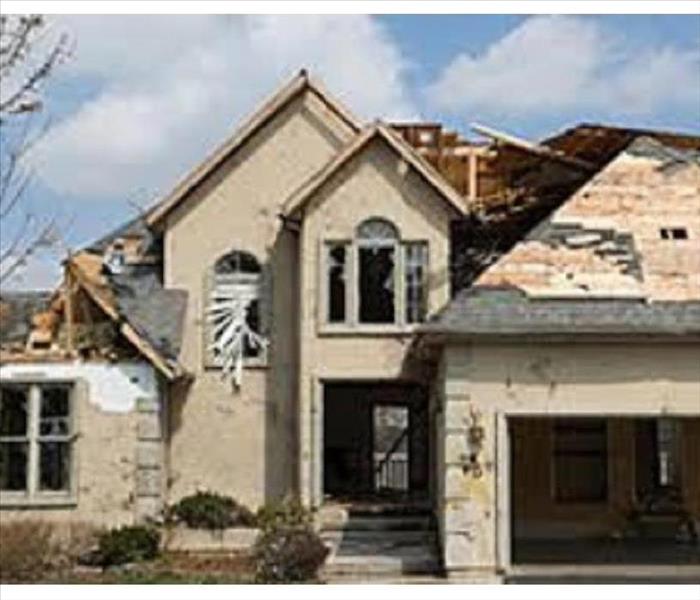 SERVPRO of Clifton - 973-928-3705
SERVPRO of Clifton - 973-928-3705
Hurricane season officially starts in June and runs through November. These tropical storms can wreak havoc on anything in their path.
Review coverage with your insurer
Sit down with your insurance agent to find out if you have adequate insurance for your home, car and any boats or recreational vehicles. Does your policy provide temporary housing in case your residence is uninhabitable following a storm? Do you know your deductible and any policy limits? Tropical storms can impact inland areas, too, so these questions aren't just for those living on the coast.
Your homeowners policy may cover damage caused by hurricane winds (sometimes subject to a separate deductible). However, a standard homeowners policy does not cover flooding, which is the most common type of damage from tropical storms. Ask about purchasing a separate rider for flood coverage if needed, but understand that any changes or additions to your insurance policy may take 30 days to take effect.
Inspect your home
To prepare for possible storm damage, walk around your home's interior and take an inventory of personal belongings with a short video. Anything stored in a garage or basement could get water-damaged in a flood, so consider raising items on blocks or moving them to other parts of your home. Secure outdoor furniture to prevent exterior damage.
Create an emergency evacuation plan, write it down and share it with all family members. Note where you're storing insurance documents and other important paperwork. Consider scanning these documents and uploading them to secure cloud storage online, or be sure to take hard copies with you in the event of an evacuation.
Build an emergency safety kit
The Department of Homeland Security (DHS) recommends preparing an emergency safety kit in case you need to evacuate or you get trapped in your home. You may not be home when you're ordered to evacuate, so consider preparing kits for your car and workplace, too.
DHS suggests that your kit include enough water and non-perishable food for each person in your family for at least three days. If you have pets, don't forget to include extra water and pet food. Other useful supplies: a manual can opener for food, flashlight and extra batteries, first aid kit and wrench or pliers to shut off utilities.
Bottom Line
Hopefully you'll never need to use your flood insurance or an emergency safety kit, but if you do have that unfortunate experience, you'll be glad to have them. Planning for a natural disaster and making sure you have the proper insurance coverage can also help give you and your family greater peace of mind.
Storm Damage Cleanup and Restoration
7/20/2017 (Permalink)
 Our highly trained crews are ready to respond 24/7 to storm or flood damage
Our highly trained crews are ready to respond 24/7 to storm or flood damage
SERVPRO of Clifton Professionals
- Provide 24/7 Emergency Service
- Highly Trained Water Restoration Specialists
- Faster to Any Size Disaster
- A Trusted Leader in the Restoration Industry
Storm and flood damage can be devastating. Immediate action is needed, and you need the company with storm damage experience. SERVPRO of Clifton Professionals have the expertise and the resources to handle at size disaster and can respond immediately to storm and flooding conditions.
Why Choose SERVPRO of Clifton?
We are Faster to Any Size Disaster
SERVPRO of Clifton Professionals are dedicated to responding immediately to water and storm damage emergencies. A fast response lessens the damage, limits further damage, and reduces cost.
They're Highly Trained Water Damage Specialist
They specialize in water and storm damage restoration, the cornerstone of our business. SERVPRO of Clifton Professionals have extensive water damage restoration training that enables them to get you back to normal.
They Have the Resources to Handle Storms and Disasters
SERVPRO of Clifton Professionals have a national network of over 1,700 franchises across the country and elite Disaster Recovery Team strategically located throughout the country.
Regardless of the Storm Damage, We can Help
Storms occur with little warning and can be especially devastating, so you'll need the company that you can trust to rise to the occasion. Regardless of the type of storm, SERVPRO of Clifton Professionals can handle any size disaster. During catastrophic storms and major events our Disaster Recovery Team can respond quickly with additional resources.
- Flooding caused by heavy rains
- Hurricanes and tidal surges
- Tornadoes and wind damage
- Ice and snowstorms
- Wild fires
Have Storm or Flood Damage? Call Us Today
SERVPRO of Clifton - 973-928-3705
How to Protect Your Home From Summer Storms
7/12/2017 (Permalink)
 If your home suffered summer storm damage call us today!
SERVPRO of Clifton - 973-928-3705
If your home suffered summer storm damage call us today!
SERVPRO of Clifton - 973-928-3705
What should I be doing to protect my home from spring and summer storms? Follow these seven simple steps to prepare for volatile weather.
Some simple steps can make a big difference in protecting your home from wind, hail and water damage.
- Fix your roof. Snow and ice from a tough winter may have damaged, which can cause problems during storms. Replace any missing shingles and also make sure your chimney has a cap on it.
- Check your gutters. Clean your gutters and make sure they're draining properly
- Seal windows and doors. Make sure the caulking around windows and doors are sealed.
- Trim trees. Trim and branches that could potentially land on your house.
- Check your sump pump. Melted snow and rainstorms are raising the water levels in lakes, streams and rivers which can lead to sewage backup problems. Make sure your sump pump I working and consider a battery- backup which will keep if running if power should go out.
- Adjust your insurance. Sewage backup is automatically included in most homeowners insurance policies, but you can generally add a rider onto your existing policy.
- Sign up for storm alerts.
SERVPRO of Clifton - 973-928-3705
Faster to Any Size Emergency
How to Check your Food After a Natural Disaster
5/9/2017 (Permalink)
Few things are as scary and unpredictable as natural disasters. While all emergencies are terrifying, there's something about the uncontrollable nature of these disasters that make them especially frightening.
While it's impossible to know what exactly will result after one of these disasters, it always pays off to have some practical knowledge on hand, from the biggest issues to the smallest inconveniences.
When it comes to said inconveniences, nothing is as annoying as trying to guess whether your food has gone bad or not. Often during a huge storm, electricity tends to get blown out, which means that your refrigerator has probably died and left your food to spoil. One of two things will happen: the food will defrost, go bad, then maybe refreeze OR it will stay frozen or refreeze in time to keep the food edible.
We can feel a little safer with this practical, simple tip:
DIRECTONS
Place a cup of water in your freezer.
Freeze the water until it is solid, and then put a quarter on top of the frozen water and return it to your freezer.
Leave it in your freezer.
You're probably asking yourself, what does this tip accomplish?
It helps you determine whether or not your food has gone bad , or whether it refroze or stayed frozen while you were away.
For instance, if you return after you have been evacuated and find the frozen water has melted and the quarter has fallen to the bottom of the cup, you know that all the food has defrosted and it should be thrown out.
However, if the quarter is either on the top of the frozen cup or in the middle of the cup, then your food may still be okay to eat. The top tells you that the freezer was still in tact the whole time - the middle tells you that your food might have defrosted, but later refrosted when electricity returned.
Most importantly, as a general rule, if you feel your food is no longer safe, simply throw it out. Safety is the utmost priority and eating food that may have spoiled can have numerous negative health consequences.
How to Build Your Own Emergency Disaster Kit
4/26/2017 (Permalink)
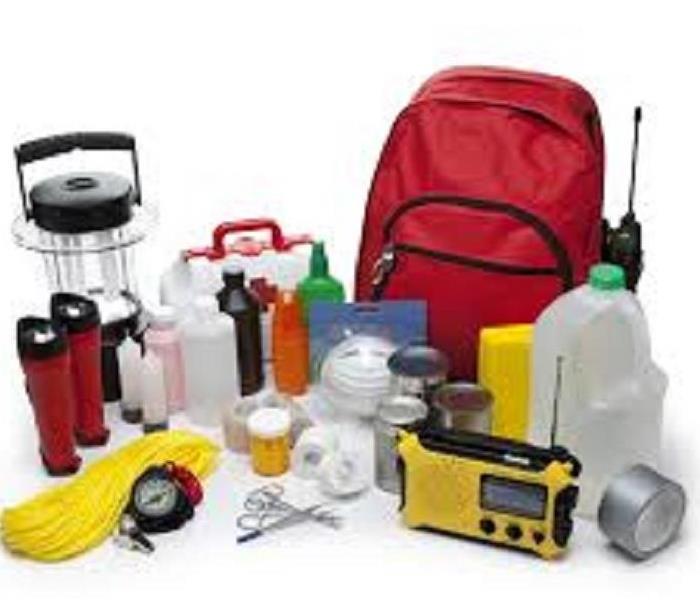 Be Emergency Ready
Be Emergency Ready
Have you ever wondered about emergencies? Some people don't care to prepare a kit until after the disaster has happened, also known as too little too late. With this sample checklist you can quickly create your own emergency disaster kit that could keep you alive and comfortable for 3 days.
- Container for the kit, such as a plastic tote or a wearable duffle bag
- 1 gallon of water per person/day
- Portable tent
- Small tarp
- Poncho
- 2,000 calories of healthy food per person/day (nuts, grains, food bars, canned food etc.)
- Compact sleeping bag and bedroll
- Hygiene Products
- Toilet Paper
- Baby Wipes
- Deodorant
- Bandana
- Soap
- Dust Mask
- Potty bags
- Latex gloves
- Toothbrush and toothpaste
- Feminine products
- First aid kit
- Roll of gauze
- Medical tape
- Alcohol wipes
- Blood cagulant
- Gauze pads
- Painkillers
- Burn/wound cream
- Petroleum jelly or other lubricant/moisturier
- Tools
- Pocket knife
- Whistle
- Hand warmes
- Duct tape
- Small rope
- Wire saw
- Matches
- Self powered flashlight
- Self powered radio
- List of doctors and family contacts
- Spare cash
- Pet supplies
SERVPRO of Clifton 973-928-3705
The SERVPRO Emergency READY Profile Advantage
4/25/2017 (Permalink)
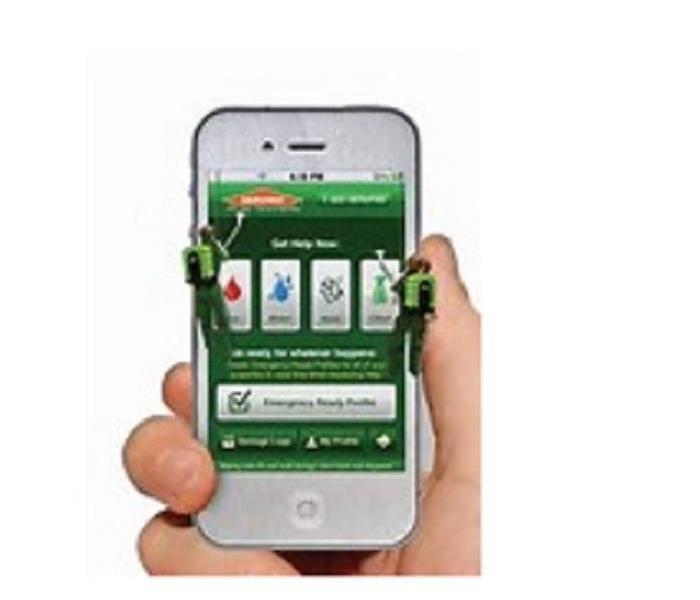 Put help in the palm of your hand
Put help in the palm of your hand
When Damage Strikes, You Can Be Ruined....Or You Can be Ready
Did you know that as many as 50% of businesses close down following a disaster, according to the latest research? Of the businesses that survive, the overwhelming majority of them had a preparedness plan in place. Pre-planning can serve as an insurance policy aimed at peace of mind. And knowing you are "Ready for whatever happens" speaks trust to your clients and employees that in the event your business is affected by a disaster, they don't necessarily have to be.
The SERVPRO Ready Plan is a tool for property managers, both residential and commercial. It allows the creation of an emergency READY profile. By developing a SERVPRO Emergency READY Prolife for our home or business, you minimize business interruption by having an immediate plan of action.
Knowing what to do and what to expect in advance is key to timely mitigation and can help minimize how water and fire damage can affect your home or business.
Are You Ready? CLICK HERE to get started today.
SERVPRO of Clifton
973-928-3705
What is the Difference Between a Hurricane Watch and a Hurricane Warning
9/22/2016 (Permalink)
During hurricane season it is important to be prepared and know the difference between a hurricane watch and hurricane warning.
Hurricane Watch: A hurricane watch means that hurricane conditions (sustained winds of 74 mph or higher) are possible within the specified area. A hurricane watch is issued 48 hours in advance of the anticipated onset of tropical-storm-force winds in an area.
Hurricane Warning: Hurricane conditions (sustained winds 74 mph or higher) are expected within a specified area. Because hurricane preparedness activities become difficult once winds reach tropical storm force (sustained winds of 39 to 73 mph), the hurricane warning is issued 36 hours in advance of the anticipated onset of tropical-storm-force winds.
When a hurricane watch is issued, you should:
- Listen to a battery-operated radio or television for hurricane progress reports.
- Check your emergency supplies. Make sure everything is stocked and in working order.
- Gas up your car.
- Bring in garbage cans, lawn furniture, bikes, toys, hanging plants and lawn decorations. If possible, disassemble the swings on your child's swing set to prevent unnecessary damage.
- Secure buildings by closing and boarding up windows. Remove outdoor antennas.
- Turn your refrigerator and freezer to their coldest settings so that food will last longer if the power goes out.
- Store drinking water.
- Store valuables and personal papers in a waterproof container.
- Review your evacuation plan with your family.
- Move your boat securely or transfer it to a designated safe area. Use rope or chain to secure the boat to a trailer.
- Use tie downs to anchor your trailer to the ground or your house.
When a hurricane warning is issued, you should:
- Listen constantly to a battery-operated radio or television for official instructions.
- If you are in a mobile home, make sure it is tied down and evacuate immediately.
- Stay inside, away from windows, skylights and glass doors.
- Keep a supply of flashlights and extra batteries handy. Avoid open flames, such as candles and kerosene lamps, as a source of light.
- If you lose power, turn off all major appliances. Too many running appliances can create a power surge when the power is turned back on.
Be Prepared for a Disaster or Emergency
4/12/2016 (Permalink)
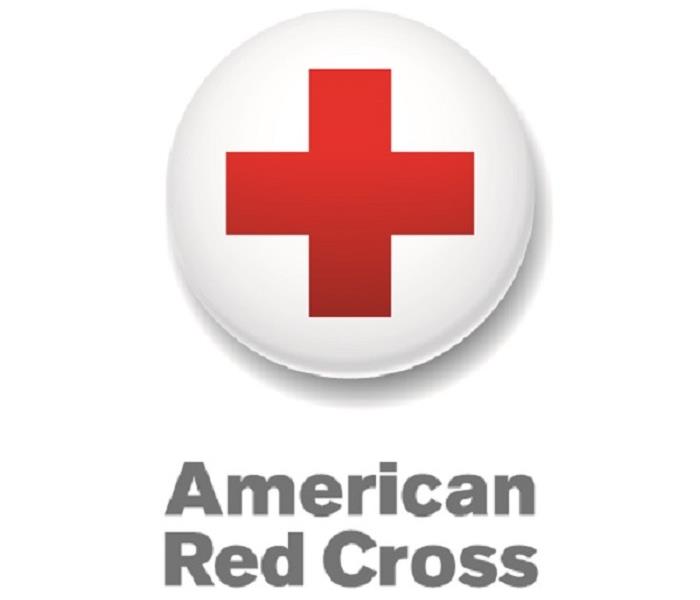 SERVPRO of Clifton Supports the RED CROSS
SERVPRO of Clifton Supports the RED CROSS
Do you know what to do to keep your family safe in an emergency? Plan to Protect Yourself and Your Family.
Being prepared for natural disasters - floods, hurricanes, earthquakes, and tornadoes - is the best way to protect you, your family, your pets and your belongings. When a natural disaster is imminent, you'll have to act quickly, so it's important that you do everything you can before disaster strikes. Your pre-disaster prep should include assembling your supply kits, gathering food, water and medication for all family members and pets, developing evacuation plans and securing your possessions. The information below will help you get started.
GET A KIT
Gather the necessary resources you need to act on your plan in the event of a disaster. Have at least three days of supplies in an easy to carry evacuation kit with additional supplies at home in case you cannot leave.
An easy way to get your kit started is to contact your local Red Cross or go online to www.redcross.org to order an emergency preparedness kit today. Store it where it is easily accessible.
Remember to check your kit and replace the stock every six months.
MAKE A PLAN
It’s important that in an event of an emergency that your entire family is prepared for the event. If a situation arises were your family isn’t together, there should be systems in place for contacting one another.
The following are a few basic steps to remain safe:
– If one of your family members is enlisted to serve in the military, then make sure to plan out what would happen if they were deployed.
– Allocate responsibilities to each family member in the household so that in the event of an emergency, everyone can work as a team.
– Discuss between your family how all of you intend to prepare and respond to an emergency.
How to prepare incase your family is separated during an emergency:
– Discuss two locations that all of you can meet out. Two locations are vital in case the one of the locations isn’t accessible due to the emergency.
– Make sure to have an out of state contact in case it’s impossible to call or reach anyone in your area. Every person in your family should have this contact.
How to prepare for an evacuation:
– It’s always important to know where you plan to go if an emergency strikes. This could be a hotel, a friend’s home or a relative’s home. It’s preferable to also have a location that is slightly out of your area.
– Make sure to run drills. Practicing an evacuation twice a year will keep you plenty prepared for a real disaster. Remember to also drive your planned evacuation route.
– Have pets? Then make sure to prepare for them as well. Not all hotels or motels will accept pets, so make sure to have a list beforehand.
BE INFORMED
An important step in preparing yourself for a possible disaster is by learning the types of disasters that might occur in your city. These events could could simply be events that would only effect you and your family such as a home fire or a medical emergency, to larger disasters such as floods or earthquakes.
The following are further steps you should take to be informed:
– Figure out ways in which local authorities would be able to convey a disaster to you, such as over the radio or television.
– Educate yourself on different weather alerts, specifically knowing the difference between watches and warnings. It is also crucial to know how to react to both of those alerts.
– Prepare yourself for the type of disaster you would expect in your own city or in the city that you’re traveling to. If you’re visiting an area that is prone to floods, then prepare for a possible emergency evacuation if there is a possibility of the disaster striking.
– There should be at least one individual in your family that is trained in first aid and CPR. It would also be beneficial if they know how to use an automated external defibrillator.
Additional Tips:
Make sure to print out emergency contact cards for all your household members. On these cards should be the contact information for each household member, along with their work information. These cards should be kept in a wallet or a purse.
You may download an emergency contact card template from Red Cross at the following link.






 24/7 Emergency Service
24/7 Emergency Service
















